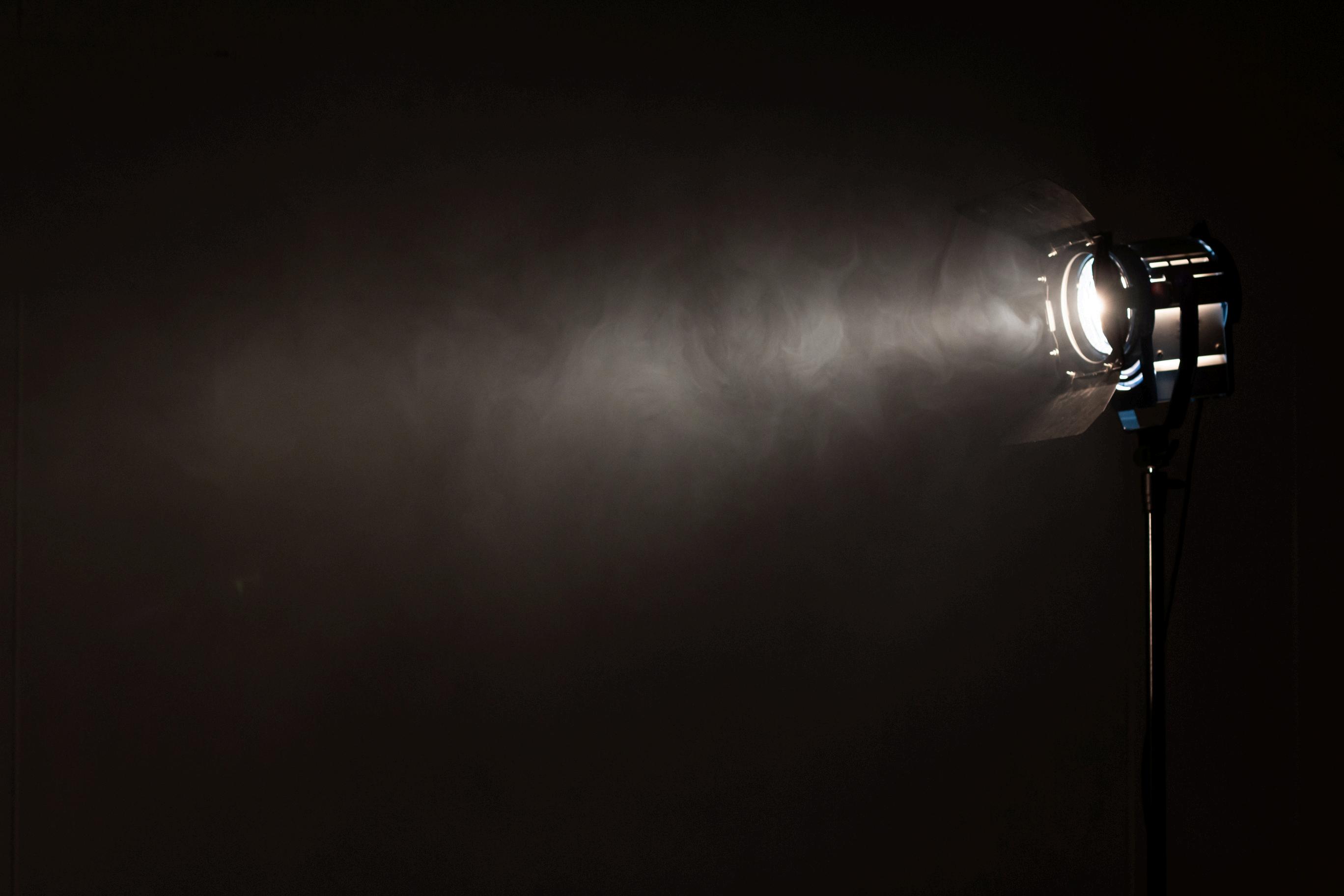

LIGHTS. CAMERA. INTERACTIVE.
INTERACTIVE VIDEO FOR FASHION FILM
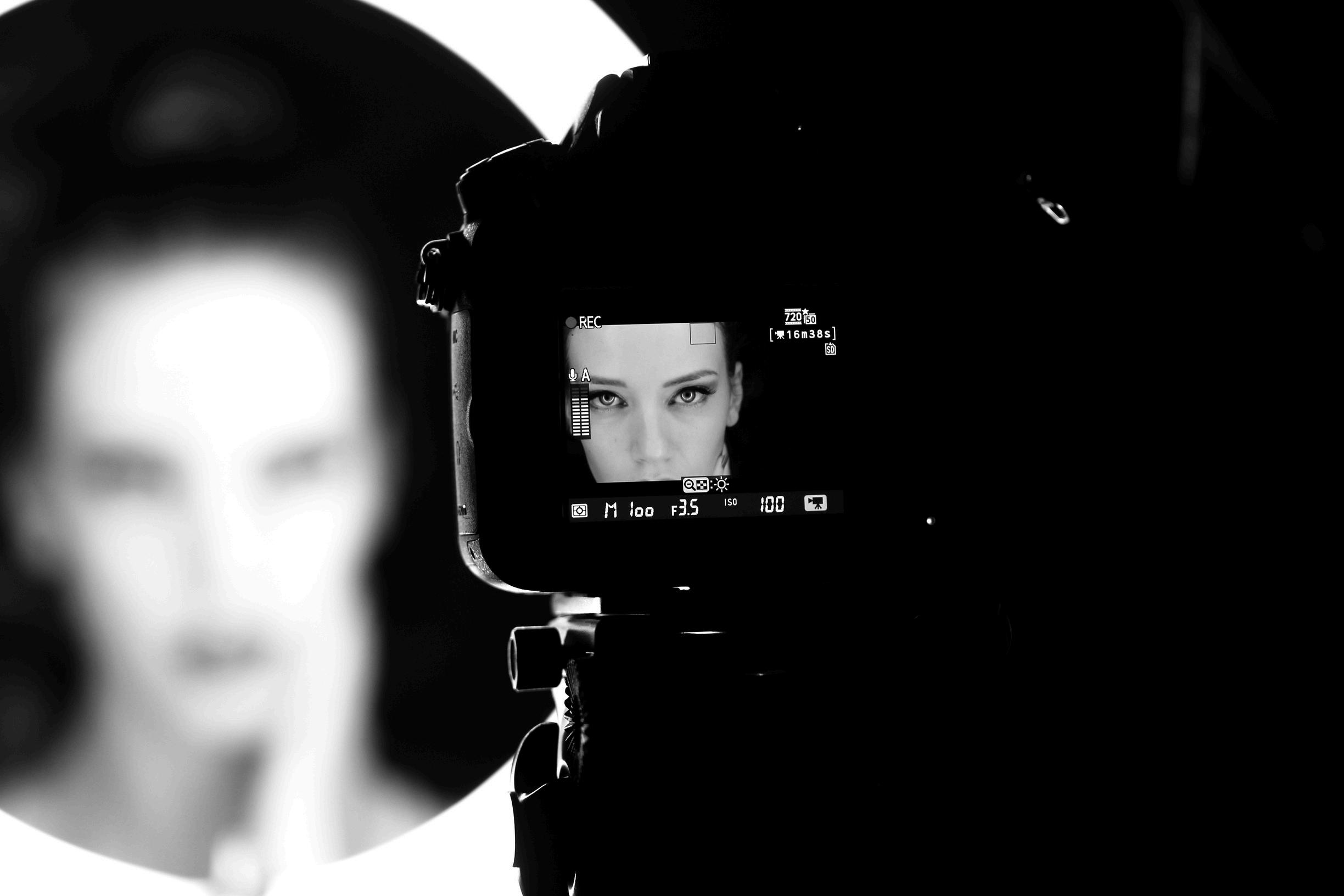
TABLE OF CONTENTS
Chapter 1: Industry and Market Research
Luxury Fashion Industry
Overview
Size and Scope
Outlook
Industry Leaders
Mega Trends
Factors Affecting the Industry
Fashion Film
Overview
Analysis
Interactive Video
Overview
Analysis
Competitive Analysis
Luxury Market
Fashion Film Market
Interactive Video Market
Growth of Interactive Video
Types of Interactivity
Competitive Analysis
Examples of Interactive Video
SWOT Analysis: Interactive Video for Fashion Film
Chapter 2: Consumer Research
Customer Segments
Psychographic Segmentation of Luxury Consumers
Demographic Segmentation of Consumers
Behavioral Segmentation of Consumers
Chapter 3: Primary Research
Methodology
Survey Objectives
Survey Summary and Analysis
Chapter 4: Key Findings
Chapter 5: Strategy
Chapter 6: Framework
Interactive Video for Fashion Film Framework
Purpose of Framework
Make a Decision
Consider Objectives
Define Points of Interactivity
Final Production
Evaluation
Budget Allocation
Budget Planning
Chapter 7: Case Study
Brand Selection
Alexander McQueen
Brand Overview
Brand History
Mission Statement
Brand Identity Prism
Business Model
Unique Selling Proposition
Alexander McQueen in Fashion Film
Brand Summary and Proposition
Target Audience
Consumer Profile
Persona: Meet Hannah
ConsumerJourney Map
Application of Framework
Focus Groups
Chapter 8: Conclusion
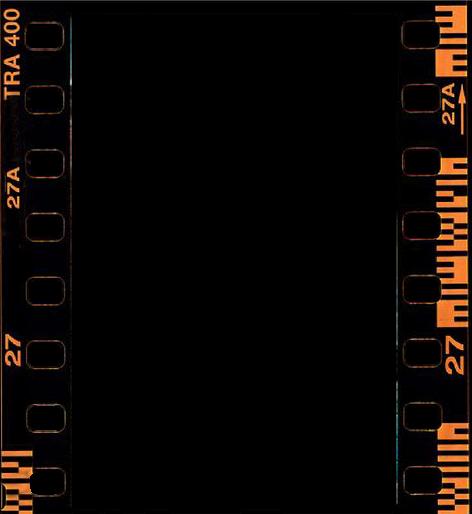
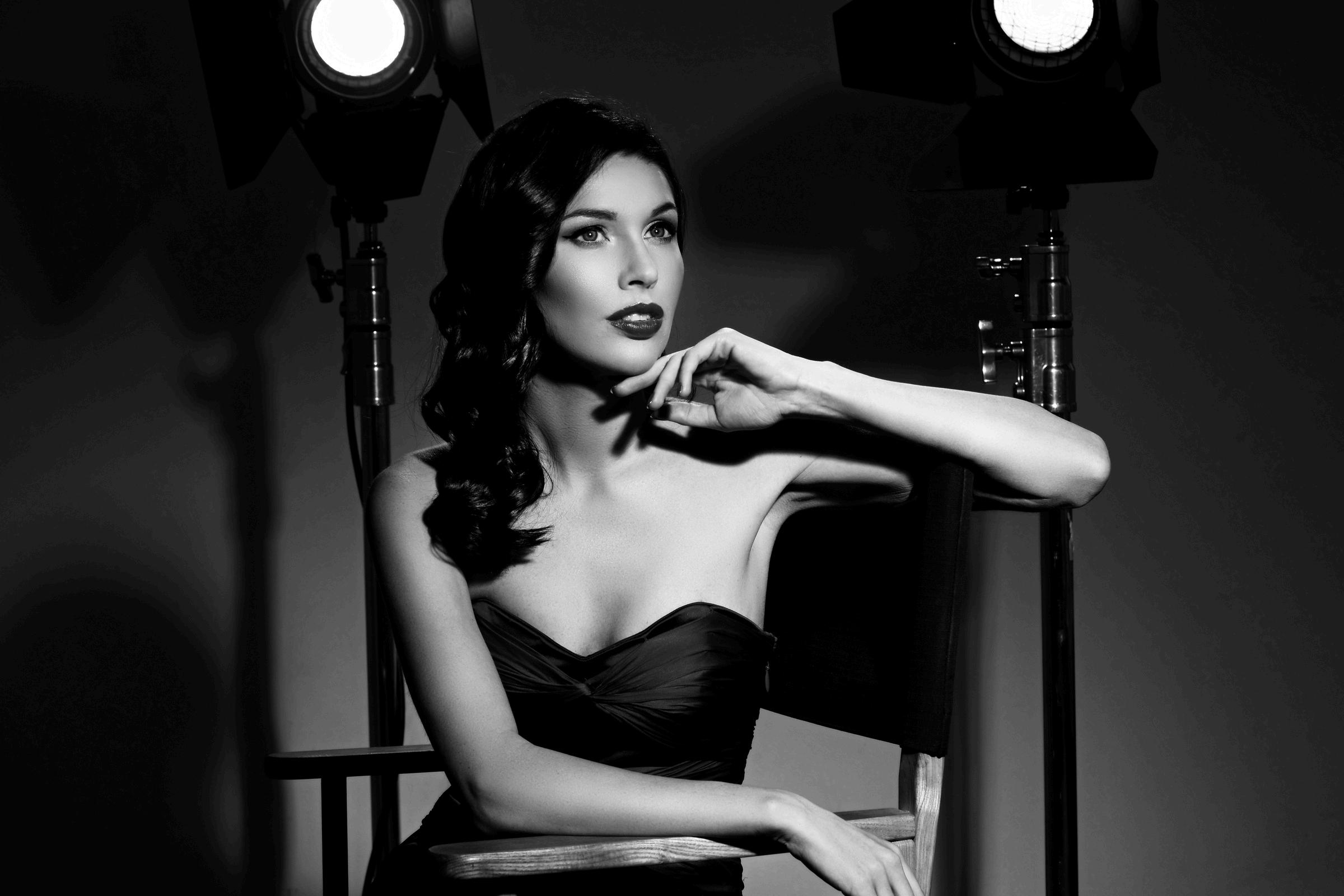
ABSTRACT
This thesis explores fashion film and how luxury brands can leverage interactive video to grow online presence and engage consumers through personalized, gamified experiences. The research looks at the fashion film industry and the online positioning of high-end luxury brands. Additionally, it identifies points of interactivity brands can leverage to deliver innovative online experiences for consumers. There are many benefits which are addressed that brands will gain from introducing interactive video for fashion film.
This thesis also provides a framework for luxury brands to use when considering interactive video for fashion film. The purpose of this framework is to guide brands through the process of implementing interactive video for their fashion film production cycle. Subsequentially, a case study is conducted to test the framework and provide an example of interactive fashion film.

CHAPTER 1
INDUSTRY AND MARKET RESEARCH

LUXURY FASHION INDUSTRY
OVERVIEW
The luxury fashion industry is characterized by its focus on exclusivity, craftsmanship, and quality materials, with prices often commanding a premium over other fashion brands. It is categorized by apparel, footwear, handbags, and accessories. The luxury fashion industry operates on a global scale, with flagship stores and boutiques located in major cities around the world. The industry is highly competitive, with brands vying for market share and positioning themselves as the epitome of luxury and exclusivity (“Luxury Fashion - Worldwide | Statista Market Forecast”). The luxury fashion industry is often associated with high-end fashion shows, celebrity endorsements, and expensive marketing campaigns. It remains a highly profitable and influential sector of the fashion industry, attracting customers who are willing to pay a premium for high-quality, exclusive fashion products.
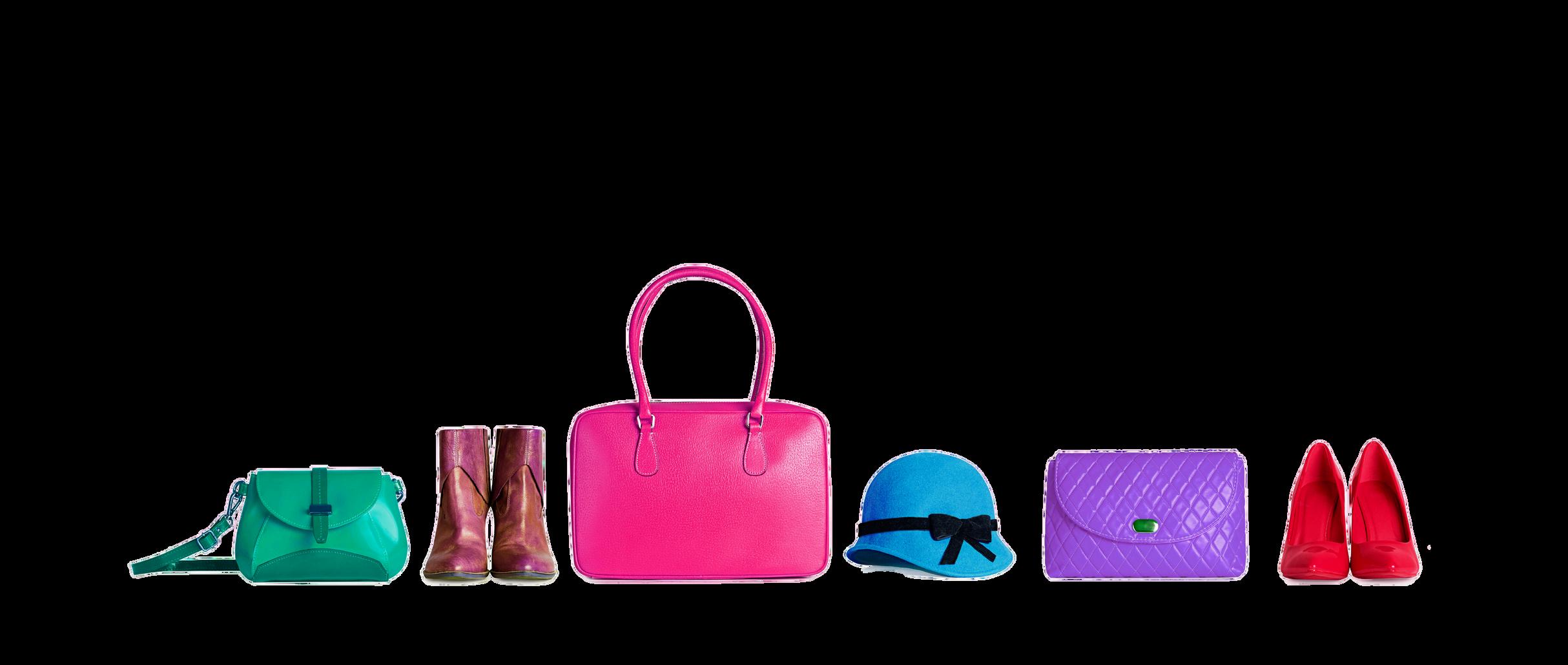
SIZE & SCOPE
The luxury fashion industry is an important contributor to the global economy, generating billions of dollars in revenue each year; its market size is valued at $111.50 billion as of 2023 (“Luxury Fashion - Worldwide | Statista Market Forecast”). The United States leads the global market in luxury fashion with a total annual revenue of $82.3 billion (“Luxury Fashion - Worldwide | Statista Market Forecast”).

OUTLOOK
The outlook of the luxury fashion industry is positive, as the industry continues to grow and adapt to changing market conditions and consumer preferences. Revenues are projected to grow at an annual rate of 3.39% through 2028 (“Luxury Fashion - Worldwide | Statista Market Forecast”). One of the key factors driving growth in the luxury fashion industry is the increasing demand from consumers in emerging markets, particularly in Asia (“Luxury Fashion - Worldwide | Statista Market Forecast”). More consumers are entering the middle and upper classes, creating a larger pool of potential luxury consumers as these markets continue to develop and expand.
However, the luxury fashion industry also faces challenges, including increasing competition, the rising cost of raw materials, and changing consumer preferences. Brands that can adapt to these challenges and innovate to meet the evolving needs of their customers will be well-positioned for success in the years ahead.
INDUSTRY LEADERS
The luxury fashion industry is highly competitive, with several brands vying for market share and consumer attention. The industry leaders of luxury fashion include LVMH, Kering, Ralph Lauren, and PVH (“Luxury Fashion - Worldwide | Statista Market Forecast”). LVMH is the fashion house over major brands such as Luis Vuitton, Fendi, and Loro Piana (“Luxury Fashion - Worldwide | Statista Market Forecast”). Kering is home to popular brands Gucci, Balenciaga, and Saint Laurent (“Luxury Fashion - Worldwide | Statista Market Forecast”). PVH houses Calvin Klein and Tommy Hilfiger (“Luxury Fashion - Worldwide | Statista Market Forecast”).
MEGA TRENDS
A major trend that has grown in relevance in the luxu of sustainable and ethical fashion. Consumers are be the environmental and social impact of the product brands are responding by developing more sustain practices. One of these practices is in-house luxury fashion re create their own resale marketplaces where cus secondhand items directly through the brand’s webs Beauloye). This trend is becoming increasingly popul sustainable and ethical fashion options. For brands Vuitton, creating their own resale marketplaces allow over the resale process, ensuring that the products so condition (Booker). Other brands, like Gucci, opted to f resale platforms such as The RealReal (Booker).
The growth of e-commerce and digital channels is als luxury fashion industry. Many luxury brands are inves offering customers a more personalized and conve The pandemic has accelerated this trend, with more than ever before. The rise in popularity of NFTs an metaverse experiences has brands evaluating how to spaces as well (Eppe Beauloye).


FACTORS AFFECTING THE INDUSTRY
Several current factors are affecting the luxury fashion industry, including the ongoing COVID-19 pandemic, changes in consumer behavior, and sustainability concerns (Achille and Zipser). Geopolitical and economic factors such as trade tensions and changing consumer preferences in emerging markets are also affecting the luxury fashion industry (Achille and Zipser). The COVID-19 pandemic has had a significant impact on the luxury fashion industry, leading to store closures, disrupted supply chains, and decreased consumer demand. Brands have had to adapt to the changing market conditions by focusing more on e-commerce and digital marketing. Consumers have also shifted their spending patterns, placing more emphasis on comfortable and casual clothing, rather than formal and luxury products.
Changes in consumer behavior are also affecting the luxury fashion industry, particularly, sustainability concerns have gained prominence in recent years. Consumers are looking for brands that are transparent about their supply chains and production processes, and that use sustainable materials and practices (Achille and Zipser). Consumers take time to research brand values and sustainability efforts to make informed purchase decisions.
Many of these factors influenced by consumer behavior are due to a shift in consumer age. The next generation of consumers is a younger demographic with a brand-new set of preferences and behavioral characteristics. Although these consumers are not yet able to purchase luxury goods, brands market to this audience to raise brand awareness and establish an online presence by way of aspirational marketing.

FASHION FILM

Fashion films are short films or videos that showcase clothing, accessories, and other fashion-related products in a cinematic and often artistic way (Rees-Roberts). These films can be used for a variety of purposes, including digital brand promotion, documentaries, and designer (Rees-Roberts). Fashion films often feature high production values, creative direction, and cinematography. They can range from simple product videos to more elaborate productions with storylines, music, and special effects. Some fashion films are even screened at film festivals or exhibited in art galleries. Fashion film provides a platform for experimentation and artistic expression and can be used to push the boundaries of traditional fashion advertising. Some of the most notable fashion campaigns of recent years are Hermés House of Scarves and Inside Chanel (Gilliland). However, brands are also capitalizing on celebrity endorsements, like Balenciaga x Kim Kardashian and Valentino x Zendaya, which have gained more traction due to the influence of social media (McClelland).
ANALYSIS STRENGTHS
Artisticandcinematicpromotionaltoolusedbybrands
Differentvariationscanbeutilized(digital,documentary,ordesigner)
Usestraditionaladvertisingpracticesbutisnotperceivedby consumersasadvertising
Canovershadowprintcampaignsattimes
OPPORTUNITIES
Canbeleveragedasteasersforuseonsocialmedia
Extendsthelifecycleofcampaigns
"Newtimesdoindeedrequirerevisedmodesofcriticalengagement"
WEAKNESSES
Interpretationisvagueastowhatqualifiesasfashionfilm
Productionmayrequirelargebudget
Linearvideoformatwhichlacksengagement
THREATS
Socialmediacauseddisruptiontoindustry
Popularculturehasdilutedtheindustrywithfeaturefilmscentered aroundthetopicoffashion
Dataprocessinghastakenpriorityoverfilmnarrative
Passiveviewingishighforlinearvideoasmostviewersarelookingat multipledevices
ANALYSIS
STRENGTHS
With their focus on high production value, visual storytelling, and creative direction, fashion films draw inspiration from traditional film and photography (Rees-Roberts). These films draw inspiration from traditional film and photography techniques and use them to create visually compelling and emotionally engaging experiences for the viewer. They often feature stunning imagery, music, and sound effects and are produced with a high level of craftsmanship and attention to detail. Fashion films have become an important tool for fashion brands and designers to showcase their collections and creative vision while engaging with consumers in new ways. The artistic and cinematic qualities of fashion films are also evident in their use of creative direction and artistic references. They may draw inspiration from a range of artistic sources, including painting, sculpture, film, and photography, to create a visually striking and cohesive concept (Rees-Roberts). Fashion films often push the boundaries of traditional filmmaking by using experimental techniques and unconventional camera angles, editing styles, or sound design.
There are several variations of fashion film which include digital, documentary, and designer (Rees-Roberts). Brands create digital fashion film as a promotional tool to enhance the campaigns for new collections (Rees-Roberts). These are the most popular medium of fashion film, among both brands and consumers (Rees-Roberts). Digital fashion film is promoted through social media and other digital platforms, such as YouTube. Documentary fashion film can take on many forms. Typically, it gives a behind the scenes look to the viewer (Rees-Roberts). Some examples of documentary fashion film are backstage at a fashion show, the staging of labor or an inside look at the design process, filming everyday
fashion, and the fashion photographer on film (Rees-Roberts). The goal of fashion film documentaries is to demystify the industry by allowing fashion followers a closer look inside what goes on behind closed doors. Designer fashion film is a biographical account of the designer’s life aimed to showcase or preserve a brand’s history or heritage; examples include Coco Chanel and Yves Saint-Laurent (Rees-Roberts). The concept is to capture the personalities of the designers to provide the audience with a better glimpse into the creative genius of the icon at the helm of the brand (Rees-Roberts). Each of these forms of fashion film provides the viewer with an opportunity to experience the brand in new ways.
Fashion films can overshadow print campaigns at times (Rees-Roberts). While print campaigns still have their place in the fashion industry, fashion films provide dynamic and immersive nature, shareability, brand storytelling, and flexibility. One of the key advantages of fashion films is their ability to create a dynamic and immersive viewing experience that captivates audiences in a way that still images cannot. With the use of music, movement, and storytelling, fashion films can create a mood or atmosphere that enhances the brand’s message and resonates with viewers (Rees-Roberts). With the rise of social media and video-sharing platforms, fashion films can quickly gain traction and reach a wider audience than traditional print campaigns (Rees-Roberts). There is also a lack of flexibility with print campaigns that fashion films can provide by being repurposed across multiple platforms. Brands must consider these factors when planning fashion films that coincide with print campaigns as to not dilute the objectives of the print media.
ANALYSIS
WEAKNESSES
Filmmakers disagree on what qualifies as fashion film. Feature films have been released with fashion as the storyline, which has caused audiences to perceive this as fashion film. Fashion industry experts do not view these forms of popular narrative cinema as legitimately qualifying as the fashion film genre (ReesRoberts). Nick Knight, founder of SHOWstudio, says, “the functional purpose of fashion film is to display clothing in motion” (qtd. in Rees-Roberts). The curator of the Fashion in Film festival, Marketa Uhlirova, describes fashion film as “an umbrella term across media,” noting that journalistic formats such as photography also can be categorized as fashion film (qtd. in Rees-Roberts). The interpretation of what qualifies as fashion film is still subjective and there is a need to clearly define the characteristics of fashion film.
The budget associated with producing a fashion film is an important consideration for any fashion brand or designer looking to create high-quality visual content. Several factors can contribute to the cost of producing a fashion film, including equipment, location, crew, talent, and post-production. The cost of renting or purchasing equipment to produce a professional-looking final product can be significant. Equipment considerations include high-quality cameras, lighting equipment, and editing software. The location of the shoot is another factor that can contribute to the cost of producing a fashion film. Popular locations, such as major cities or exotic destinations, can be expensive to rent and sometimes may require permits or fees. Studio rentals also have associated costs. The size of the crew necessary for production will depend on the scale of the project and the specific needs, but the cost of paying for a director, cinematographer, makeup artist, and stylist also factors into the
production budget. Similarly, talent such as models or actors will require payment as well. While the budget for a fashion film can range from a few thousand dollars to hundreds of thousands of dollars, careful planning and consideration of each element can help ensure that the final product is of high quality and meets the needs of the brand or designer (Rees-Roberts). In-house production can reduce costs and allow for more creative control over the production, but this is not always feasible to achieve an artistic experience.

Fashion films have historically been delivered in linear video format which limits viewer engagement. While compelling storylines can grab the viewer’s attention, there are no points of interaction available through linear video. Linear video has fewer opportunities to track certain data points such as dwell times and conversion rates which can help determine the effectiveness of a fashion film campaign. Instead, linear video relies on views, share counts, and likes for data analytics which ultimately does not evaluate viewer engagement.
ANALYSIS
OPPORTUNITIES
The same way movies are promoted with trailers, brands can leverage social media to promote the release date of fashion films or launch of a campaign (ReesRoberts). Short video clips can be shared on platforms such as Instagram, Facebook, and Twitter to generate excitement and anticipation for the film. This creates buzz around the project and encourages viewers to tune in to the full film when it is released (Rees-Roberts). There is also opportunity for brands to share behind-thescenes content on social media when promoting fashion films. This can include footage of the creative process, casting, and production of the film. Sharing this type of content provides viewers with a glimpse into the making of the fashion film. Social media gives brands the opportunity to build anticipation for the fashion film premiere with the ability to share teasers with the audience.
Fashion films also provide brands with the opportunity to extend the life cycle of campaigns and create a lasting impact (Rees-Roberts). By offering a more immersive and emotional experience for the audience, increased engagement can help keep the campaign in the minds of viewers for a longer period. Fashion films are easy to share on social media platforms and can continue to be shared long after the initial campaign has ended (Rees-Roberts). This can help to extend the reach of the campaign and keep it in the public eye. The repurposing of fashion films by using static images from the film for in-store displays, online ads, and on brand websites can help to keep the campaign fresh and relevant, even after the initial launch has ended (Rees-Roberts).
Rees-Roberts states, “new times indeed require revised modes of critical engagement” (Rees-Roberts). Brands have an opportunity to identify new ways to engage consumers with fashion film. Fashion films should have a clear and compelling narrative that draws the viewer in and keeps them engaged. The story should be wellcrafted, visually stunning, and emotionally resonant, and it should capture the essence of the brand and the collection being showcased (Rees-Roberts). Experimenting with different styles and techniques and considering the latest technology are also equally important when evaluating the effectiveness of a fashion film.
ANALYSIS
THREATS
Social media has been disruptive to the fashion film industry since platforms launched the ability to share video (Rees-Roberts). Social media platforms have made it easier for anyone to create and share videos, including fashion-related content, which has led to a crowded space with more competition for views and attention. More people watch videos on their mobile devices and social platforms now, representing a shift in consumption habits. With people constantly scrolling through their feeds and consuming content quickly, social media has contributed to shorter attention spans, which may make it more challenging for fashion films to engage their audience effectively (Caloia).
Popular culture has created feature films and television shows with fashion as the main topic which has led audiences to misinterpret this as fashion film (Rees-Roberts). Some examples of feature films perceived as fashion films are Clueless, Prêt-á-porter, and Devil Wears Prada (Rees-Roberts). These, much like shows such as Sex in the City and Gossip Girl, provide the viewer with a fictional glimpse into the fashion landscape (Rees-Roberts). Another way that popular culture has diluted the fashion film industry is through the proliferation of social media influencers. Influencers have become an essential component of fashion marketing, and many fashion films are now being produced with the primary goal of catering to the influencers’ audiences (Rees-Roberts). The increasing demand for instant gratification in popular culture has contributed to a shift away from the long-term creative vision and investment required for producing fashion films, causing brands to instead leverage short, easy-toproduce content that can be shared instantly on social media.
In recent years, the fashion industry has increasingly embraced data-driven decision making, with analytics and data processing taking priority over film narrative in the production of fashion films (Rees-Roberts). While the use of data can provide valuable insights into consumer behavior and preferences, it has also led to a shift in focus away from creative storytelling and towards formulaic, datadriven content. With the rise of social media and online advertising, fashion brands are now creating content specifically designed to appeal to algorithms and datadriven metrics. This emphasis on data processing has led to a loss of artistic integrity and creativity in fashion films, with many productions becoming formulaic and predictable (Rees-Roberts). The focus on data-driven content has also led to a narrowing of perspectives and a lack of diversity in fashion films, with many brands and filmmakers relying on the same strategies and techniques to appeal to their target audience.
When viewers watch a linear video, they are more likely to be using multiple devices. This means linear video allows for passive viewing because it does not offer viewers points of engagement in which they would need to actively view to participate. In fact, market research shows that 87% of viewers of linear video are using more than one device (Parker). This is a threat to fashion film because there is a high likelihood that viewers are not actively viewing. It also calls into question the accuracy of view counts as a data point. If a viewer clicks on a fashion film and becomes distracted by their social media feed, it still counts as a view despite the fact they did not actively watch the film. Therefore, passive viewing of linear video poses a threat to how viewers engage with fashion films.

INTERACTIVE VIDEO
OVERVIEW
Interactive video is a gamified, user-guided experience. It combines video playback with gamification by allowing users to select the types of stories or outcome they wish to experience. This can include shoppable moments, changes to the plot of a storyline, and various other pathways depending on the objectives the brand aims to achieve (Parker). Interactive video has proven useful for brands with several target audiences (Ferguson). This opportunity for customization has created a powerful tool for brands to leverage in recent years, and its many benefits include increased engagement, improved user experience, better data collection, higher conversion rates, enhanced storytelling, and increased brand awareness (Parker).

ANALYSIS STRENGTHS
Viewingisactiveinsteadofpassive
Convertsathigherratesthanothervideoads
Morememorablethanlinearvideo
OPPORTUNITIES
Womenattractedtoentertainmentbasedonsocialreasoning
Nextgenerationofconsumerspreferspersonalizedexperiences
Canhelpinformconsumerpreferences
WEAKNESSES
Requiresparticipationfromtheuser
Canaddtoproductioncostsduetotheneedforadditionalsoftware
Interactivitymustbeasstrategicasitisengaging
THREATS
Metaversemaybedisruptivetointeractivevideoindustry
Socialmediaplatformsoffervideo,andmorespecificallyin "snackable"contentsizes
Desireforpost-pandemicin-personexperiences
ANALYSIS
STRENGTHS
One of the primary advantages of interactive video is increased engagement. By allowing users to interact with the content in a gamified way, interactive video can lead to higher engagement rates compared to linear videos. Interactive video provides a 591% increase in user activity over linear video because it requires the users to actively view the content whereas linear video allows viewers to view passively (Parker).
By allowing users to interact with the content and choose their own path, brands can create a more engaging and memorable story that resonates with the audience (Parker). Interactive video ads are 32% more memorable than linear video ads, even if the user does not engage with the interactive video (Parker). Enhanced storytelling in interactive video can help build a stronger emotional connection with the brand, increasing brand loyalty and awareness.
Another benefit of interactive video is the ability to create a more personalized user experience. By enabling users to interact with the content and choose their own experience, interactive videos can deliver a more personalized experience that is customized for each user's interests and preferences. This can lead to a stronger connection with the audience and a higher likelihood of conversion. Conversion rates for interactive video are more than 11%, which is higher than other digital video ads (Parker). To give additional context, Google display ads, banner ads, and YouTube annotations convert at a rate around 1% (Parker).


WEAKNESSES
Interactive video requires user participation, which may not be accessible to all viewers, particularly those with disabilities or who are using devices that are not compatible with the interactive features. Similarly, some users may prefer to passively view content without the need to make decisions or interact with the video (Onkes).
The costs associated with creating an interactive video can range from several thousand dollars to tens of thousands of dollars or more, depending on the complexity and scope of the project. There are production costs, which include the cost of scripting, filming, editing, and post-production work. In addition, interactive video requires specialized technology to create and deliver the interactive elements. Additional costs would include software and tools for creating the interactive features, as well as hosting and delivery costs for the video (Parker). Large-scale brands will also want to consider testing costs to deliver a fully optimized user-experience. This would include user testing and A/B testing to ensure the most effective, engaging experience is released and meets the needs of the target audience.
Interactive video must be as strategic as it is engaging (Onkes). To create an effective user-guided experience that maintains viewer activity and engagement, brands must define measurable objectives, understand the target audience, consider the timing of interactive moments, leverage emotion, test and optimize the video, and consider how it will promote or distribute the video (“The 6 Key Ingredients of a Perfect Interactive Video”).
ANALYSIS
OPPORTUNITIES
Interactive video will be attractive to women because they prefer entertainment experiences based on social reasoning (Crawford). Take the video game industry, for example, which has seen an increase in female gamers (Yokoi). In 2020, women accounted for 41% of the gaming community in the United States alone with other countries also having nearly half female representation (Yokoi). According to Crawford, this increase is driven by interactive storytelling which appeals to women more than spatial games due to the emotional attachment storylines create. Women make up a huge portion of every market segment, and interactive video is a gamified experience that will appeal to women through use of emotion and social reasoning.
Similarly, the next generation of consumers prefers personalized experiences over traditional marketing tactics (“Businesses and Gen Z Consumers | NCR Primer”). These consumers are eager to interact, tech-savvy, prioritize convenience, and crave unique experiences. More specifically, 77% of Gen Z consumers say that it is important to them that businesses customize interactions, with 76% wanting digital communication experiences that they can customize (Swain). Interactive video can achieve these types of personalized, user-guided experiences the next generation of consumers wants.
Interactive video also provides insights on user behavior through collectable data. This includes information on which sections of the video were watched, how long users engaged with certain elements, and which calls-to-action were clicked on (Parker). This data can be used to optimize future marketing efforts, as well as to better understand the needs and preferences of the target audience.

ANALYSIS
THREATS
The metaverse is a concept that describes a fully realized virtual world that integrates virtual reality, augmented reality, and other technologies to create a seamless, immersive experience. In the metaverse, users can interact with digital objects and experiences in a way that is not possible with interactive video or other forms of entertainment (Newman). While the potential metaverse could pose a threat to interactive video in terms of engagement and user experience, it is likely that both forms of media will coexist and continue to play important roles in marketing and entertainment.
Social media platforms offer a range of interactive features such as quizzes, polls, live streaming, and augmented reality filters that can capture user attention and create engaging experiences. With the launch of TikTok, Instagram Reels, and YouTube Shorts, social media has caused a shift in the delivery of video in “snackable” content sizes. Social media is also seen as a cost-effective means to advertising by brands and it allows marketers to target, and re-target, audiences based on demographics, interests, or geographical location. This poses a threat to interactive video because it can only be shared via links; it can be shared on social media platforms, but users must follow a link to engage with the video as it is intended. Interactive video does achieve many of the same objectives as social media such as capturing user attention and engagement, so these two mediums coexist, but there is currently a barrier for the integration of interactive video with social media.
A recent study by McKinsey & Company found that 78% of consumers in the United States say they plan to attend the same or more in-person events than they did before the pandemic (Alldredge et al.). This is a potential threat for brands to consider when leveraging interactive video. Consumers are also seeking out more immersive and interactive experiences that allow them to connect with others and the world around them, which seems like something interactive video would deliver. On the contrary, this trend has given rise to new forms of experiential marketing, such as pop-up shops, immersive exhibitions, and interactive installations that offer consumers unique and engaging in-person experiences. While interactive video can be used to drive consumers to experience brands in-person, it should be used in a way that bridges the gap between these hybrid experiences.
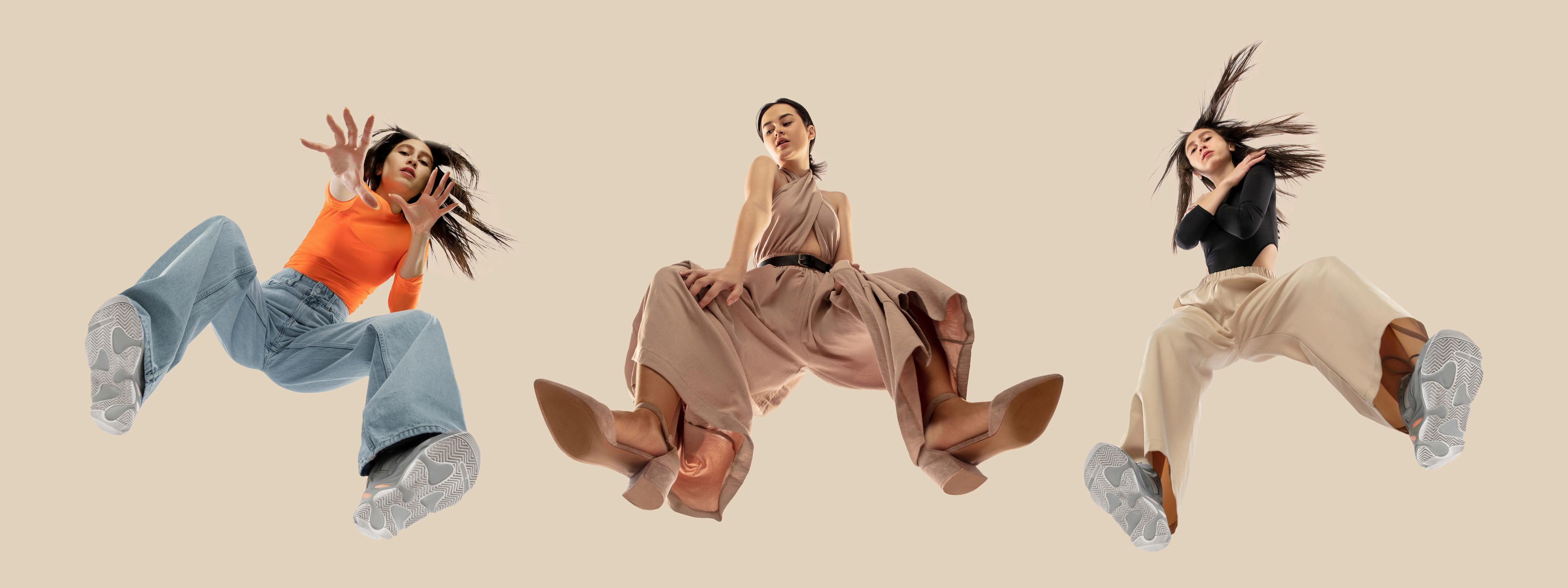
COMPETITIVE ANALYSIS
LUXURY MARKET
LESS EXCLUSIVE
STRONG ONLINE PRESENCE
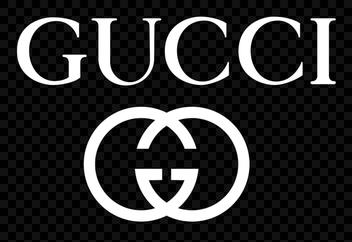



MORE EXCLUSIVE

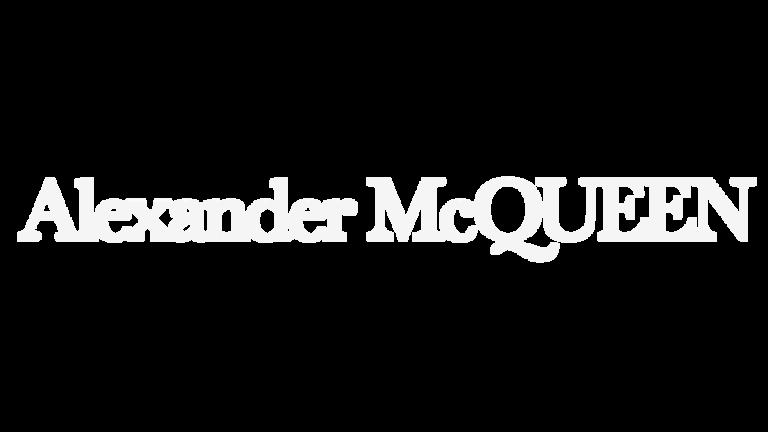
WEAK ONLINE PRESENCE
Chanel Prada Gucci Louis Vuitton Hermés Alexander McQueen
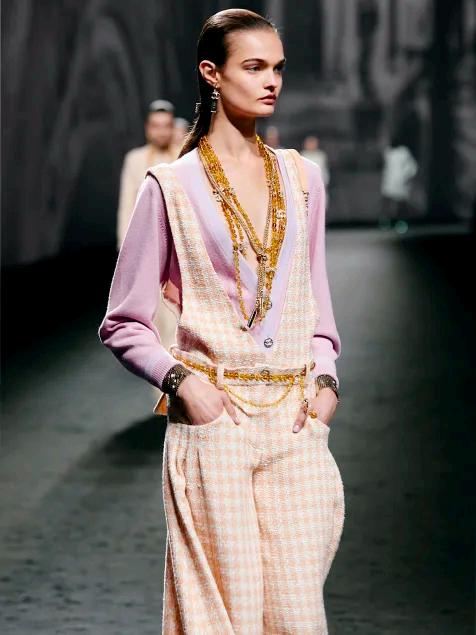
LUXURY MARKET
Chanel is a French luxury brand known for its iconic clothing, handbags, and fragrances. The brand was valued at over $15.3 billion in 2022 and has a strong market position (Sabanoglu). It has a reputation for exclusivity, timeless designs, and a deeply rich history which allows it to price its products higher than its competitors. Chanel's marketing campaigns often focus on its heritage, making it a popular choice among older consumers. It is the leading luxury brand on social media with a combined audience of 95.26 million subscribers across Facebook, Instagram, YouTube, and Twitter as of April 15, 2023. It is notable that Chanel is the leading luxury brand on YouTube with 2.16 million subscribers as of the same date.
Chanel’s YouTube subscriber count is undoubtedly due to its leadership in the fashion film industry. The brand experiments with various forms of fashion film to connect with consumers including the episodic documentary Inside Chanel, its haute couture campaigns, and product cameos in feature films like The Devil Wears Prada and Once Upon a Time in Hollywood (Waterhouse). There is no limitation to how Chanel will leverage fashion film.

LUXURY MARKET
Gucci is an Italian luxury brand known for its bold and flashy designs and has a strong social media presence. The brand offers a wide range of products, including clothing, shoes, and accessories. Gucci's marketing campaigns often feature collaborations with popular musicians and celebrities, helping to attract a younger demographic. Gucci is one of the most popular luxury brands and is valued at over 15 billion euros (Majidi). It is part of the Kering brand family (“Luxury Fashion - Worldwide | Statista Market Forecast”).
Gucci has an online presence on social media platforms such as Facebook, Instagram, Twitter, and YouTube with a combined total of 80.7 million followers as of April 15, 2023. The Gucci brand has a range of characteristics including sensual, intellectual, and menacing that differentiate it from its competitors (Adamska).
During the pandemic, Gucci leveraged its social media presence to host a digital fashion and film festival on its YouTube channel (Barco). The brand’s approach was entirely experimental and featured cameos from major artists such as Harry Styles (Barco). This curated collection of short films featured 15 emerging fashion designers from around the world (Barco). Gucci has an established presence within the fashion film industry and its YouTube channel also features fashion film of its seasonal collections.
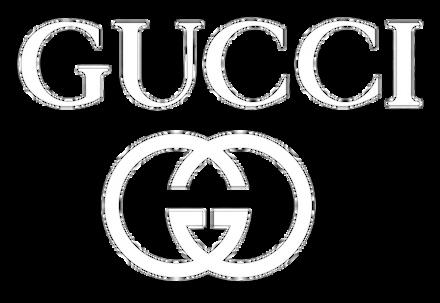
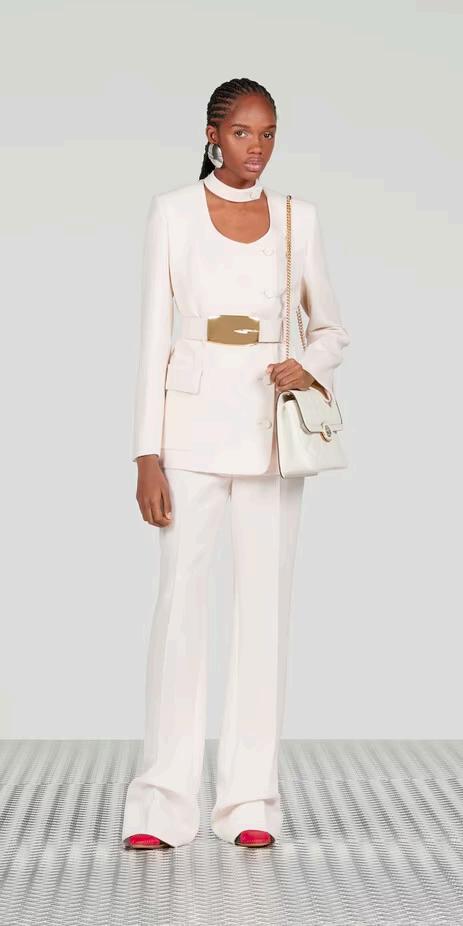
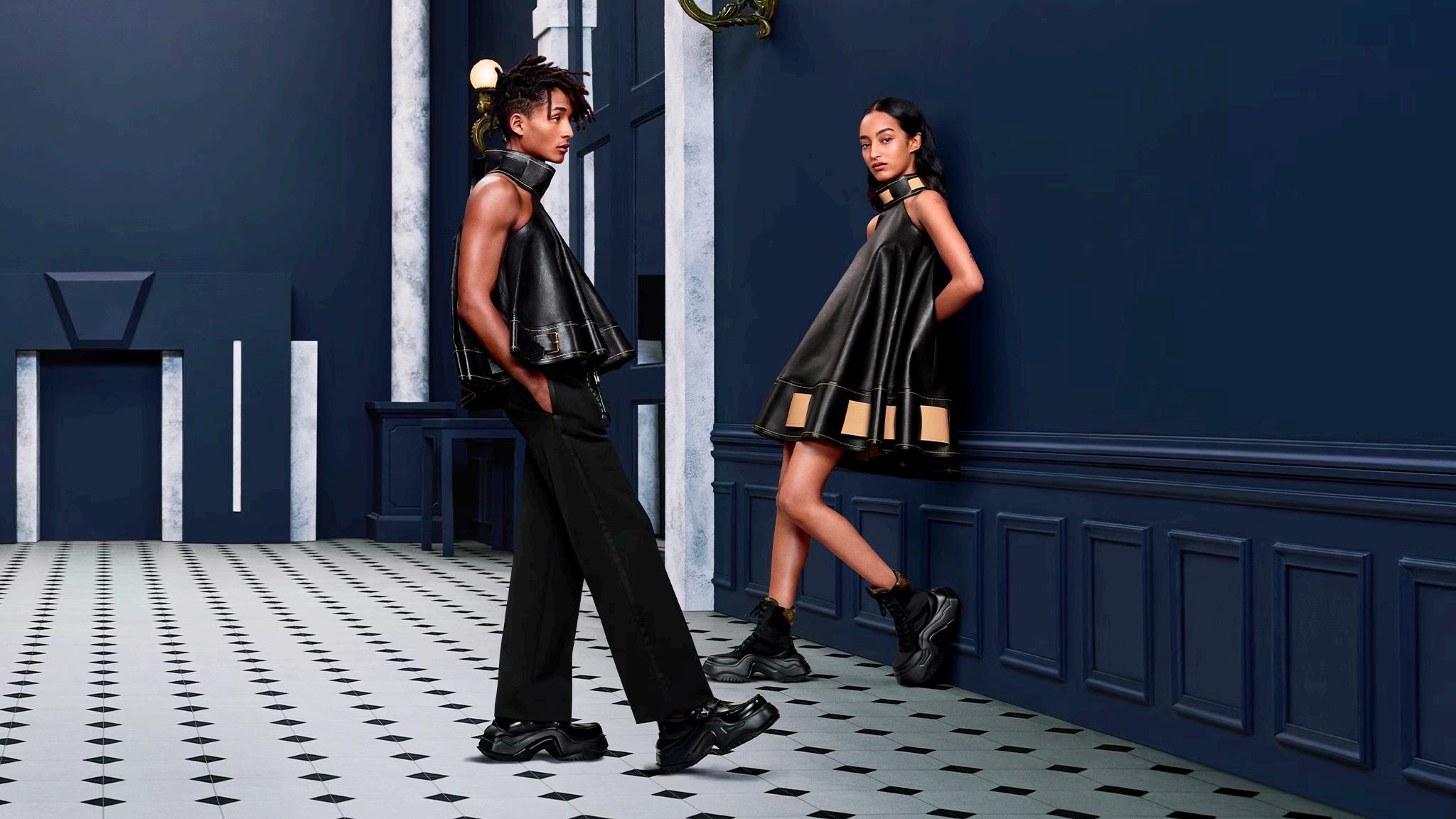
LUXURY MARKET
Another French luxury brand is Louis Vuitton, which is owned by LVMH (“Luxury Fashion - Worldwide | Statista Market Forecast”). It specializes in high-end leather goods, including handbags, wallets, and luggage, which is the origin of the brand (Adamska). The brand leads the industry at a value of over $23 billion (Sabanoglu). It emphasizes travel and exploration through its collections which creates its unique position in the market (Adamska). Louis Vuitton is the second leading luxury brand on social media and has an online presence across Facebook, Instagram, YouTube, and Twitter, with followers as of April 15, 2023, totaling 88.63 million.
Louis Vuitton remains traditional in its approach to fashion film by debuting its collections on a seasonal basis. There are limited resources highlighting what sets the brand apart in this industry as a result. However, the brand surprised its subscribers with a spin-off fashion film to its fall/winter 2021 collection featuring music artists BTS (Nast).

LUXURY MARKET
Hermès is also a leading French luxury brand that specializes in high-end leather goods, including handbags, scarves, and belts. It originated as a harness shop and maintains a light-hearted focus on its equestrian roots to set itself apart (Adamska). The brand was last valued at $2.2 billion in 2021 (Sabanoglu). Hermès is known for its limited-edition products, as well as its attention to craftsmanship and quality. Marketing campaigns often feature its iconic Birkin and Kelly handbags. On April 15, 2023, Hermès has around 7 million followers total on Instagram, YouTube, Facebook, and Twitter, which makes its online presence weak in comparison to other luxury brands.
It is interesting that Hermés does not have more of a following on social platforms because the brand uses experimental approaches to fashion film and has been featured on SHOWstudio (Knight). A documentary by Fédéric Laffont highlights the brand’s commitment to sustainability and the introduction of its “mushroom leather” (Davidson). The brand also has an athletic inspired film called Start the Movement that aligns with traditional fashion film by debuting its latest collection (Howe).
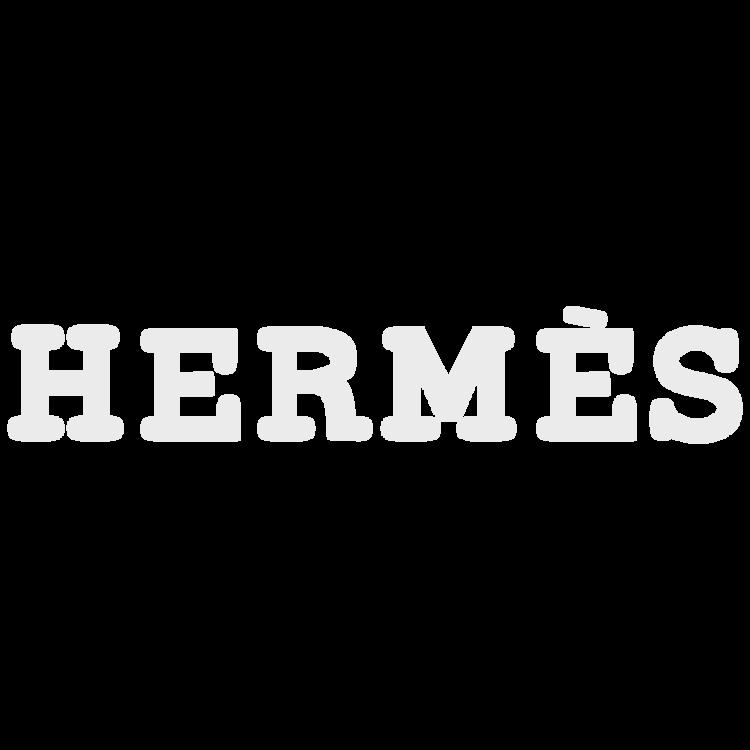
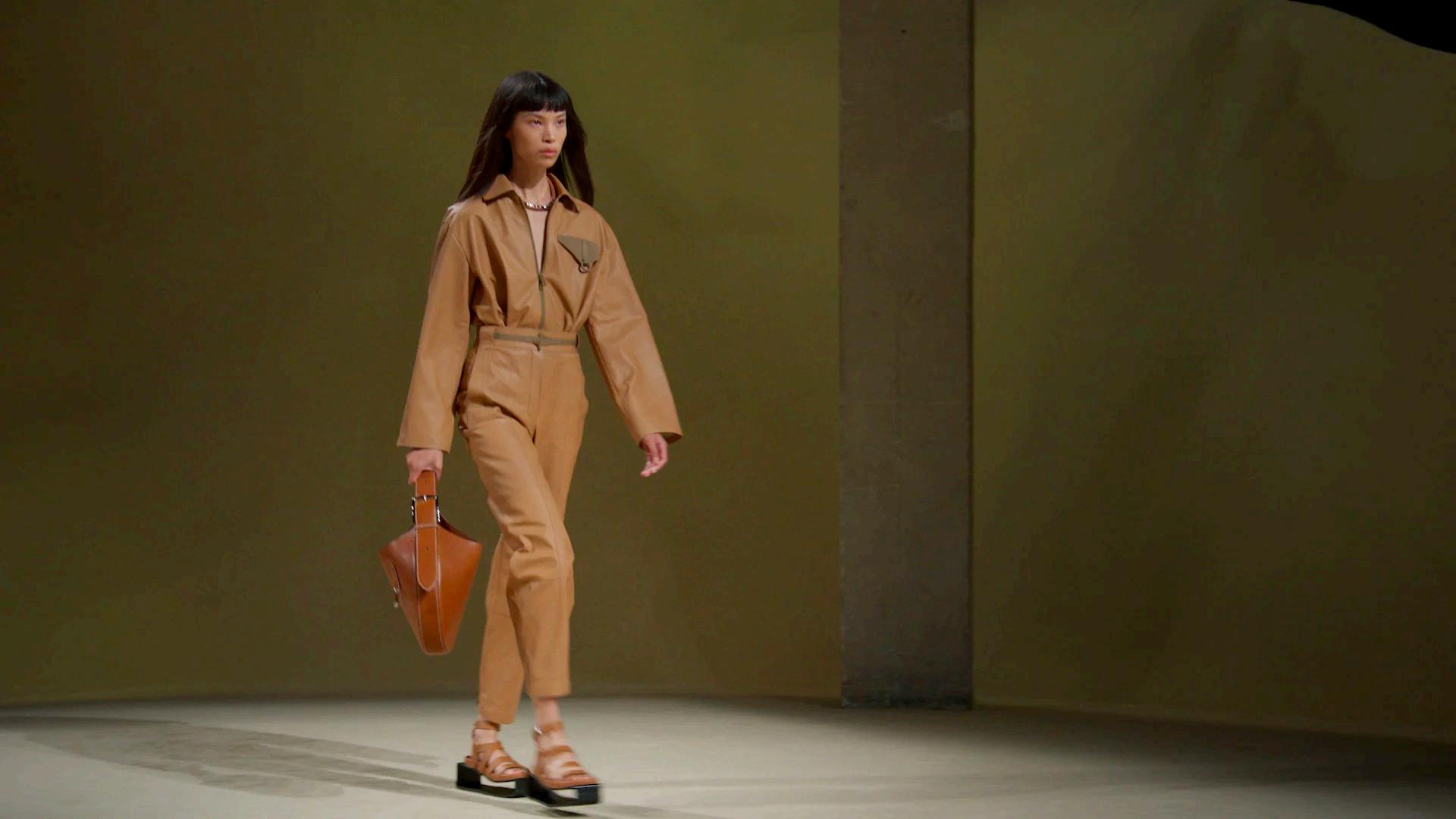
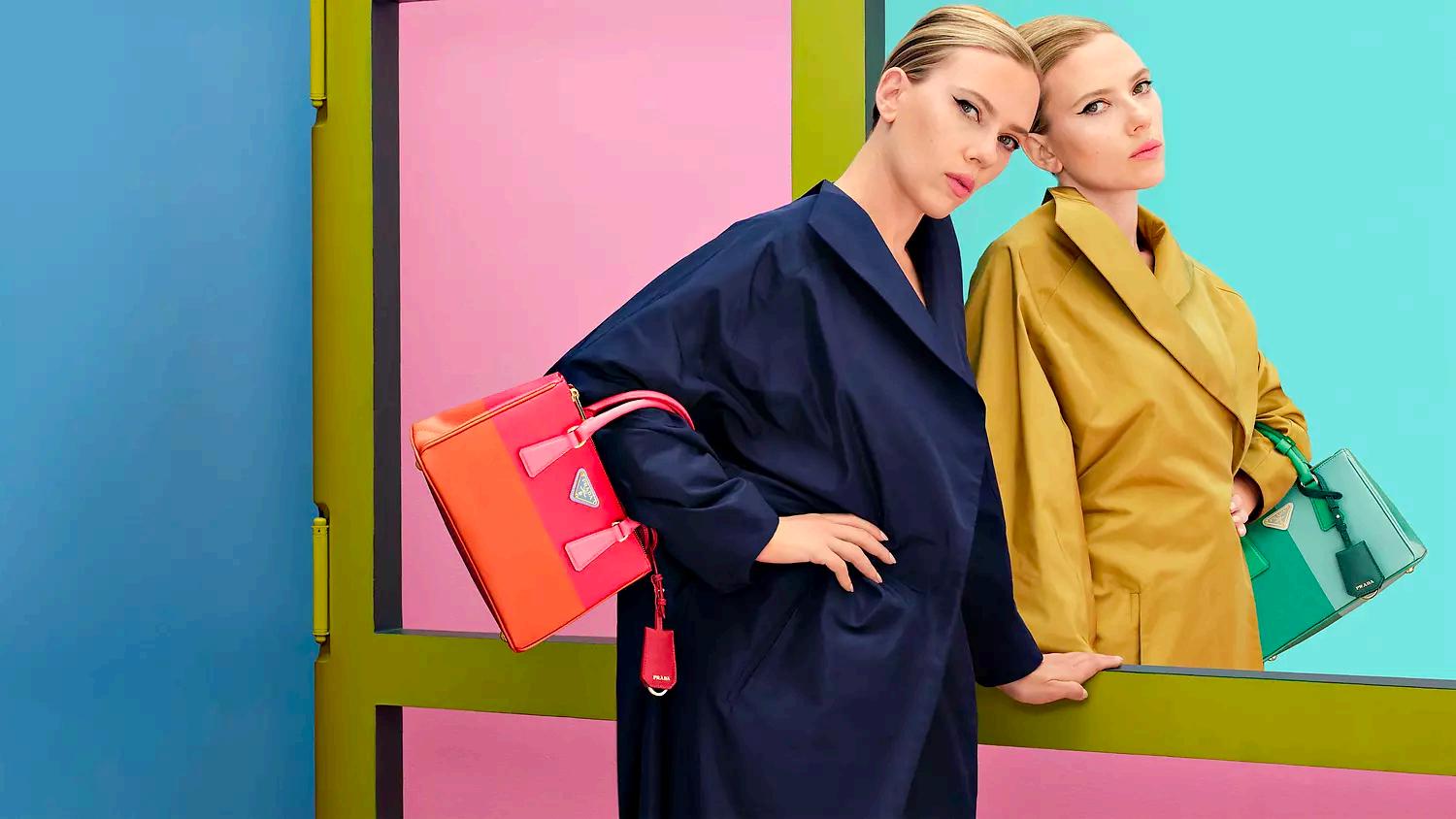
LUXURY MARKET
Prada offers a range of products, including clothing, shoes, and accessories as an Italian luxury brand. The brand has a strong position in Asian and European markets (Sabanoglu). In 2022, Prada was valued at over $6.55 billion (Smith). The brand's marketing campaigns often feature high-end fashion photography and showcase the brand's Italian heritage. Consumers who value elegance and sophistication value Prada’s consistent minimalistic style with clean lines and highquality materials which differentiates it from other luxury brands (Kolk). Given its popularity, it is surprising that it has a mediocre online presence. Prada has just under 42 million followers across Facebook, YouTube, Instagram, and Twitter as of April 15, 2023.
Prada has been featured on SHOWstudio and takes a cinematic approach to fashion film (Knight). One of their most iconic fashion films is A Therapy directed by Roman Polanski which highlights narrative and cinematography. Fashion film is at the core of the brand as Miuccia Prada considers it “cinematic art as a natural language embracing various spheres, as sight and sound, that allow the creation of direct and immediate interaction with others, beyond fashion” (“The Prada Group and Cinema | Prada Group”).

LUXURY MARKET
Alexander McQueen is known for its dramatic and unconventional designs of clothing, shoes, and accessories. The British brand has a reputation for pushing the boundaries of fashion. The brand's marketing campaigns often feature dark and edgy imagery, highlighting the brand's unique aesthetic. It is one of the fashion houses owned by Kering and contributed to the company’s 20.35 billion euros in revenue in 2022 (Sabanoglu). Alexander McQueen has the weakest online presence of luxury brands with 16.9 million followers across Twitter, Instagram, YouTube, and Facebook on April 15, 2023. It is also important to note as of the same date, the brand has 100,000 subscribers on YouTube which is the lowest amount for luxury brands.
Cinema is at the heart of Alexander McQueen films (Bowen). The documentary titled McQueen by Ian Bonhôte and Peter Ettedgui highlights the imagination and creative life of the designer (Bowen). McQueen’s approach to fashion film is to pay homage to iconic feature films such as Taxi Driver by Martin Scorsese and The Birds by Alfred Hitchcock (Bowen). In recent years, the brand attempts to use fashion film to emphasize the inspiration behind its collections (“Fashion Film”).
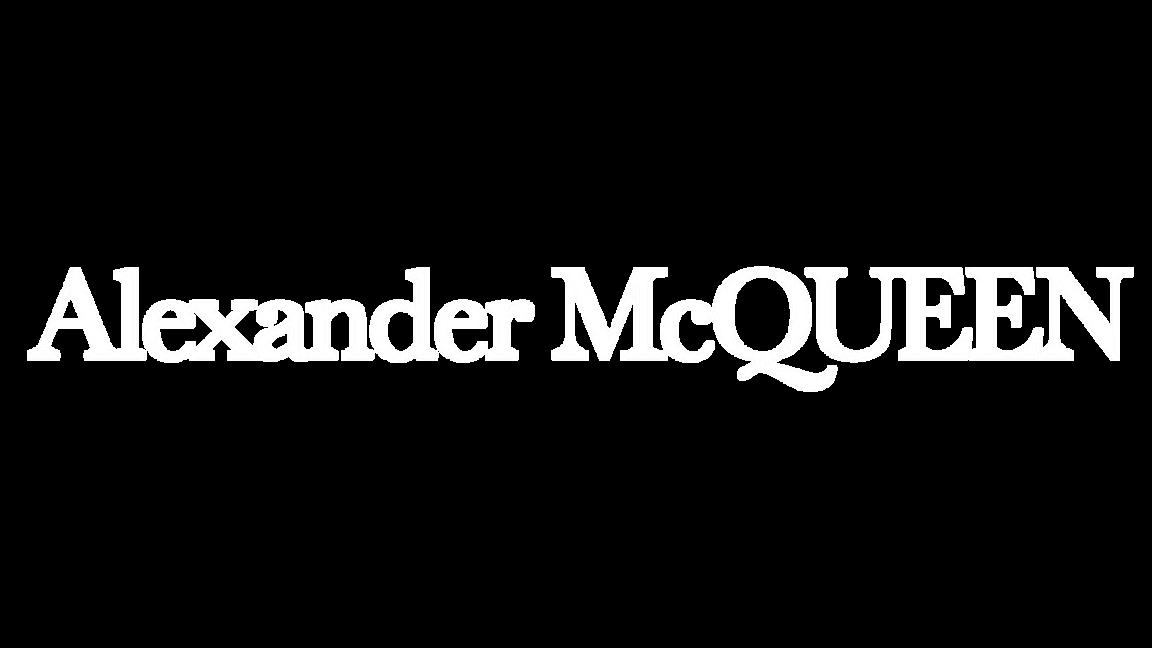
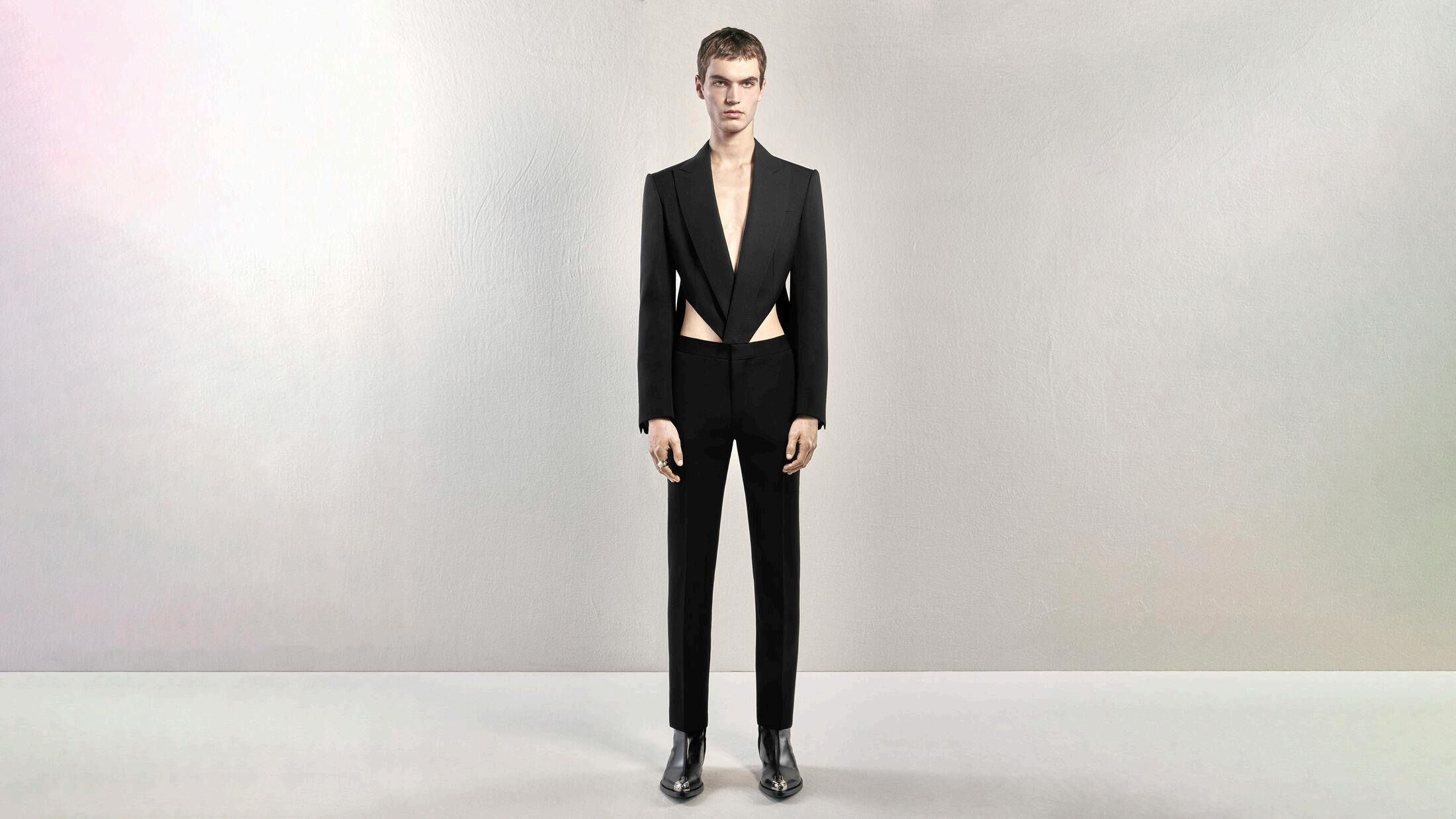
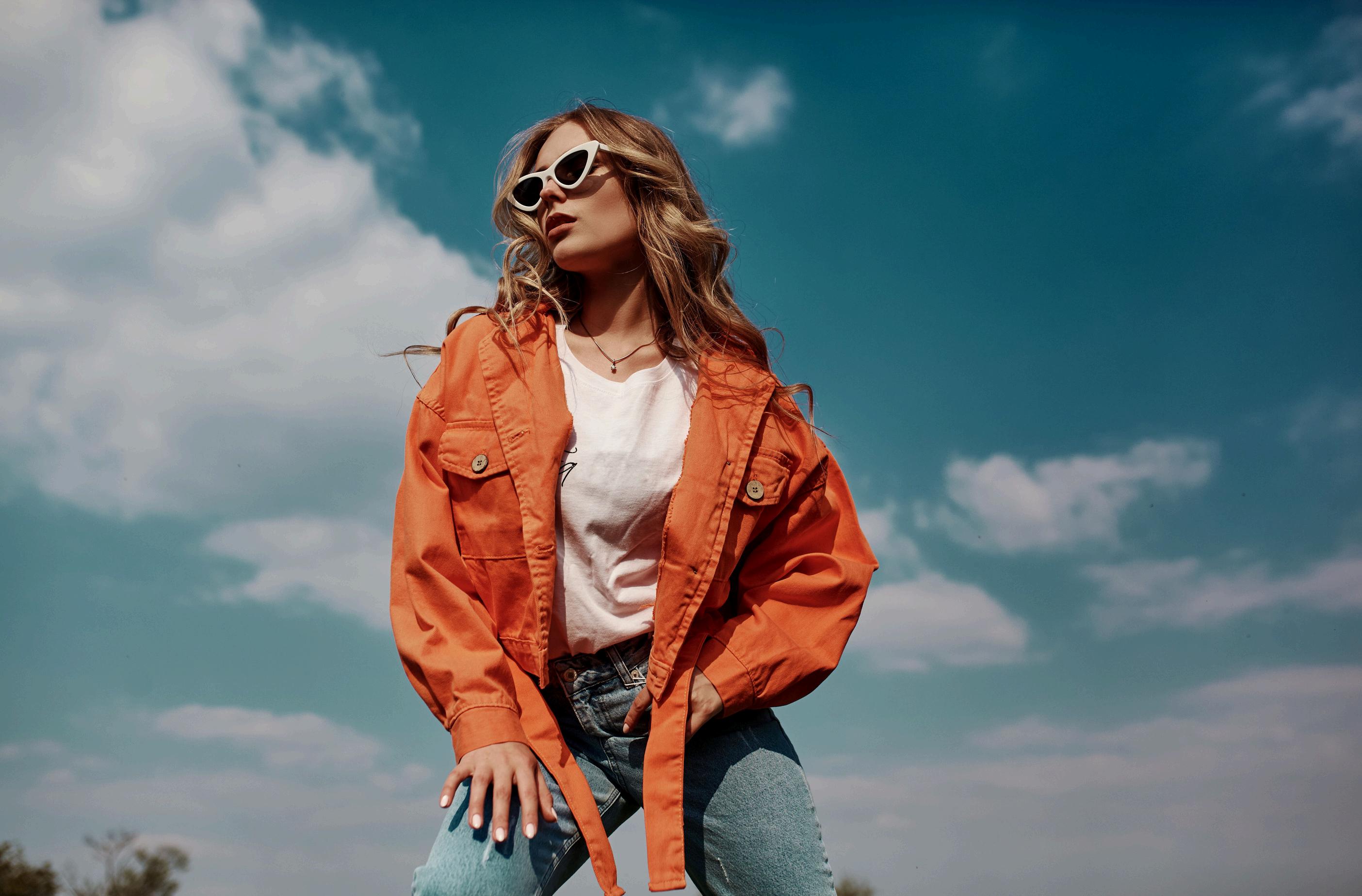
FASHION FILM MARKET
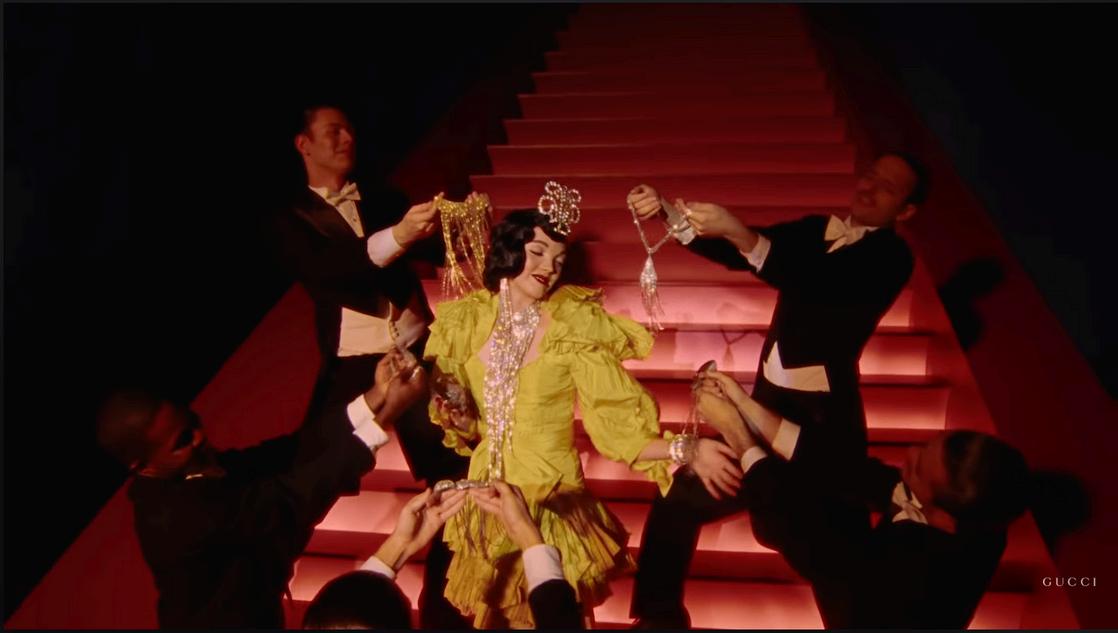
The fashion film market cannot be as easily quantified because the effectiveness is subjective and varies from one viewer to another. However, this section aims to provide examples of fashion films that have been deemed as the most iconic based on relevant, qualifying criteria such as compelling storyline, entertainment, documentary, and emotionality.
FASHION FILM CATEGORIES

COMPELLING STORYLINE
This film for Lacoste was made to celebrate the brand’s 80th anniversary (Sowerbutts). It displays the evolution of fashion while telling a story of a lovers’ chase on a train, keeping the audience on the edge of their seat (Sowerbutts).


ENTERTAINMENT DOCUMENTARY
This film is a spoof of the 1956 And God Created Woman by Roger Vadim (Sowerbutts). Actress Daphne Groeneveld stars in this Dior comedic masterpiece, portraying the same character as Brigitte Bardot (Sowerbutts).
This documentary provides a look inside the journey of fashion photographer Viviane Sassen (Sowerbutts). It was created for Nowness, a video channel platform founded by Jefferson Hack as a partnership with LVMH (“Jefferson Hack Is Part of the BoF 500”). The audience is taken back to Sassen’s childhood and her beginnings in Kenya as she describes how it influenced her work as a photographer (Sowerbutts).

EMOTIONALITY
This film was created for Nowness as well (Sowerbutts). The message conveyed to viewers is “standing on the frontlines of climate change” as the video captures footage of the aftermath from Hurricane Maria in Puerto Rico (Sowerbutts). It is categorized as a fashion film because it highlights the impacts of fast fashion on the climate crisis (Sowerbutts). The film plays to the audiences’ emotions by displaying heart-wrenching scenes of the loss the Puerto Rican community suffered (Sowerbutts).

INTERACTIVE VIDEO MARKET

The interactive video market has a multitude of software platforms to fulfill the individual needs of brands at a range of prices. This analysis provides an overview of the top brands in the market as well as the product features, pricing, distribution channels, shareability, and unique selling proposition. The following software platforms are used to create interactive video but also act as viewing platforms, which is why it is important to determine how the final video will be distributed because there can be limitations to which mediums can be shared. Additionally, this section provides an overview of who watches interactive video and examples of successful interactive videos.
GROWTH OF INTERACTIVE VIDEO
Netflix was a pioneer in interactive video beginning with its show Black Mirror: Bandersnatch (“Interactive Video”). The series saw so much success, Netflix created more interactive video series such as Unbreakable Kimmy Schmidt: Kimmy vs. the Revered, Carmen Sandiego, Captain Underpants, and Boss Baby as well as others, and marketers began paying attention (“Interactive Video”). Interactive video to date has been used for business-to-business marketing or internal business processes such as training, recruitment, and onboarding (“Interactive Video”). It also is notable that 91% of business-to-business buyers prefer interactive and visual content (“Interactive Video”).
In more recent years, brands have used interactive video to create shoppable moments through marketing efforts (“Interactive Video”). Brands like Honda have used interactive video to promote products and services as well (“Interactive Video”). The other value of using interactive video is that 77% of marketers say that interactive content is reusable, creating multiple opportunities for brand interactions and repeat visits (“Interactive Video”).

TYPES OF INTERACTIVITY
QUIZZES
Branching allows the user to control the direction of the storyline (“Interactive Video”). This could include choosing how a character responds to an interaction and selecting a particular experience or adventure (“Interactive Video”). Branching can be used for customer engagement, recruitment, and storytelling (“Interactive Video”). With branching, the consumer selects the outcome that most interests them and therefore results in higher completion rates and satisfaction (“Interactive Video”). Brands can analyze data from these interactions to understand preferences and predict demand.
HOTSPOTS
Primarily used for educational and internal business practices, quizzes can be embedded into video to test the knowledge of the viewer specific to the video content (“Interactive Video”). While this is an assessment by nature, quizzes can still be used to provide personalized viewing experiences based on viewer competency of the subject matter.
Also referred to as hotspots, buttons, links, and product overlays allow the viewer to click on various content within the video that either takes them to an external webpage or changes certain aspects of the video (“Interactive Video”). These hotspots can convert consumers as well through shoppable moments (“Interactive Video”). Other uses for buttons and links in interactive video are document downloads and linking to another video (“Interactive Video”).
TYPES OF INTERACTIVITY
User input forms in interactive video allow users to provide personal information and sign up for brand newsletters or email marketing (“Interactive Video”). Additionally, forms can be used to schedule appointments (“Interactive Video”). These forms can be placed within the video based on the timeframe of user interaction or at the end (“Interactive Video”).
INPUT FORMS
SWITCHABLE VIDEO
Videos that allow for an immersive viewing experience providing users with 360-degree angles of content (“Interactive Video”). This is most often seen in videos used for real estate or interior design. Viewers are allowed to view properties as if they are physically there due to the ability to see 360-degrees around a room.
Switchable video allows viewers to switch between camera positions, perspectives, main characters, and product choices (“Interactive Video”). This provides a variety of possibilities in a unique way (“Interactive Video”). With switchable video, the possibilities can be endless and create a fully interactive experience (“Interactive Video”).
LIMITED FEATURES
HIGH SHAREABILITY



MULTIFUNCTIONAL



LOW SHAREABILITY
COMPETITIVE ANALYSIS


Spott is the only interactive video platform that allows for continuous improvements based on analytics and product integration (Hendrik). It provides a range of features which include templates, the ability to use multi-content (i.e., images, PDFs, videos, lookbooks, and ads), product feed linking, publishing to multiple platforms (i.e., email, websites, social media, video players), and data analytics (Hendrik). Spott bills on an annual basis at a monthly rate ranging from $99 to $1,499 depending on the scope of the business and its projects (Hendrik).
Wirewax was one of the first in the interactive video market and originated from a creative studio (Hendrik). This platform is best for enterprise use as it caters its pricing for larger brands (Hendrik). Pricing ranges from $1,999 to $9,999 monthly (Hendrik). However, Wirewax does have a small brand option which starts at $1,099 monthly (Hendrik). The brand also has a shorter list of features only available on Vimeo and focuses solely on video production, but it is highly customizable (Hendrik).

Wyzowl handles the background work by creating the interactive content for a brand (Hendrik). The software does provide an analytics platform to its clients and provides multiple options for customization including hotspots, branching, and quizzes (Hendrik). However, published videos can only be embedded on websites and are not available to share through other mediums like socials. Wyzowl does not provide public pricing information as this varies based on the scale of the project, which means brands must contact for a quote (Hendrik).
Smartzer has an easy-to-use interface that offers geo-tagging features for shoppable videos (Hendrik). This platform is ideal for brands to use to allow viewers to shop the products being displayed in the video. Beyond that, the features include analytics, livestreaming, and multi-currency (Hendrik). Published videos can be shared on social media, through email, integrated with CRMs, and through messaging (Hendrik). Pricing for Smartzer is not public, and companies must schedule a demo to receive a quote (Hendrik).
COMPETITIVE ANALYSIS

g was built for e-commerce that makes quantifying engagements easy through conversion data (Hendrik). The product features e clickable tags, drop-and-drag functionality, and analytics (Hendrik). It allows for sharing on all social media platforms and via e display ads (Hendrik). Wootag allows users a free-trial period to publish up to five videos and then business plan pricing ing at $99 per month for up to 1,000 interactions and unlimited videos (Hendrik).


nk is focused on using interactivity to deliver corporate training, education, and e-learning (Hendrik). Software features include tive 360-degree images and videos, hotspots, and analytics (Hendrik). It allows for sharing published videos on social media Hendrik). Thinglink structures its pricing based on the number of authors, which starts at $25 per month for one author and up to $450 per month for an enterprise option (Hendrik).
Kerv provides the most precise metadata through use of AI and machine learning to create compelling user experiences for audiences (Hendrik). Product features include drag-and-drop functionality, tagging, and real-time feedback (Hendrik). Published videos can be shared via websites using embedded code and via Video Player-Ad Interface Definition (VPAID) (Hendrik). Kerv must be contacted for pricing as it is not available publicly (Hendrik).
EXAMPLES OF INTERACTIVE VIDEO

This video Bob Dylan by Vania Heymann was created in Eko, which is a free interactive video platform. It was a promotional video for the release of the Bob Dylan box collection (Ferguson). Viewers can use the buttons to switch between channels and change the way they are viewing the story, which is known as branching (Ferguson). It saw an impressive one million views on the day of its debut (Ferguson).
EXAMPLES OF INTERACTIVE VIDEO
This interactive video titled Rituals by Wirewax features shoppable moments for the brand Rituals (Ferguson). Wirewax created a video that takes the user through an experience of a daily routine (Ferguson). The purpose of this video was to raise brand awareness and increase differentiation (Ferguson). According to Ferguson, “this video does more than sell products, it sells a lifestyle.”
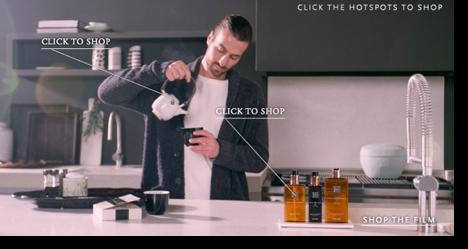
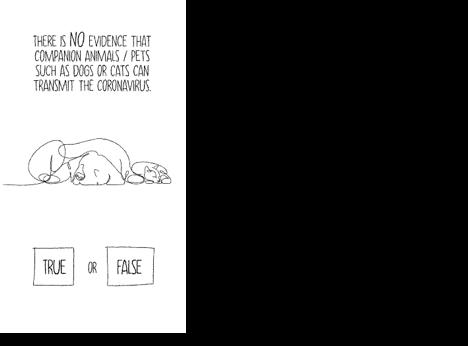
EXAMPLES OF INTERACTIVE VIDEO
The video Coronavirus Mythbusting by Wirewax features a quiz format that allows users to test their knowledge about coronavirus and receive instant feedback (Ferguson). The simple animation was created on the Wirewax interactive video platform. This video was developed specifically as a mobile-first interactive video that users can easily share (Ferguson).
EXAMPLES OF INTERACTIVE VIDEO
In this immersive video experience, users have the option at the beginning of the video to experience it in virtual reality via VR headset if available (Ferguson). The video was to promote the Tilt Brush 3D drawing app (Ferguson). Users can select the artist, the speed in which they watch them work, and experience the art in 360-degrees (Ferguson). The video also links to external traditional video interviews with the featured artists for users to watch (Ferguson).

EXAMPLES OF INTERACTIVE VIDEO
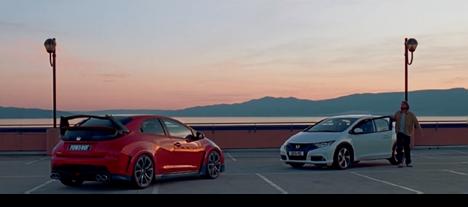
Created using the interactive video platform Wirewax, The Other Side allows viewers to switch between two worlds by holding the “R” key on their keyboard (Ferguson). The letter selection was used to highlight the Honda Civic model-R (Ferguson). The first perspective takes the viewer on a journey of a father commuting with his daughter, but when holding the “R” key, viewers are taken into an alternative high-speed experience (Ferguson). This video saw website traffic double for Honda during the campaign and users spent an average of more than three minutes interacting with the video (Ferguson).
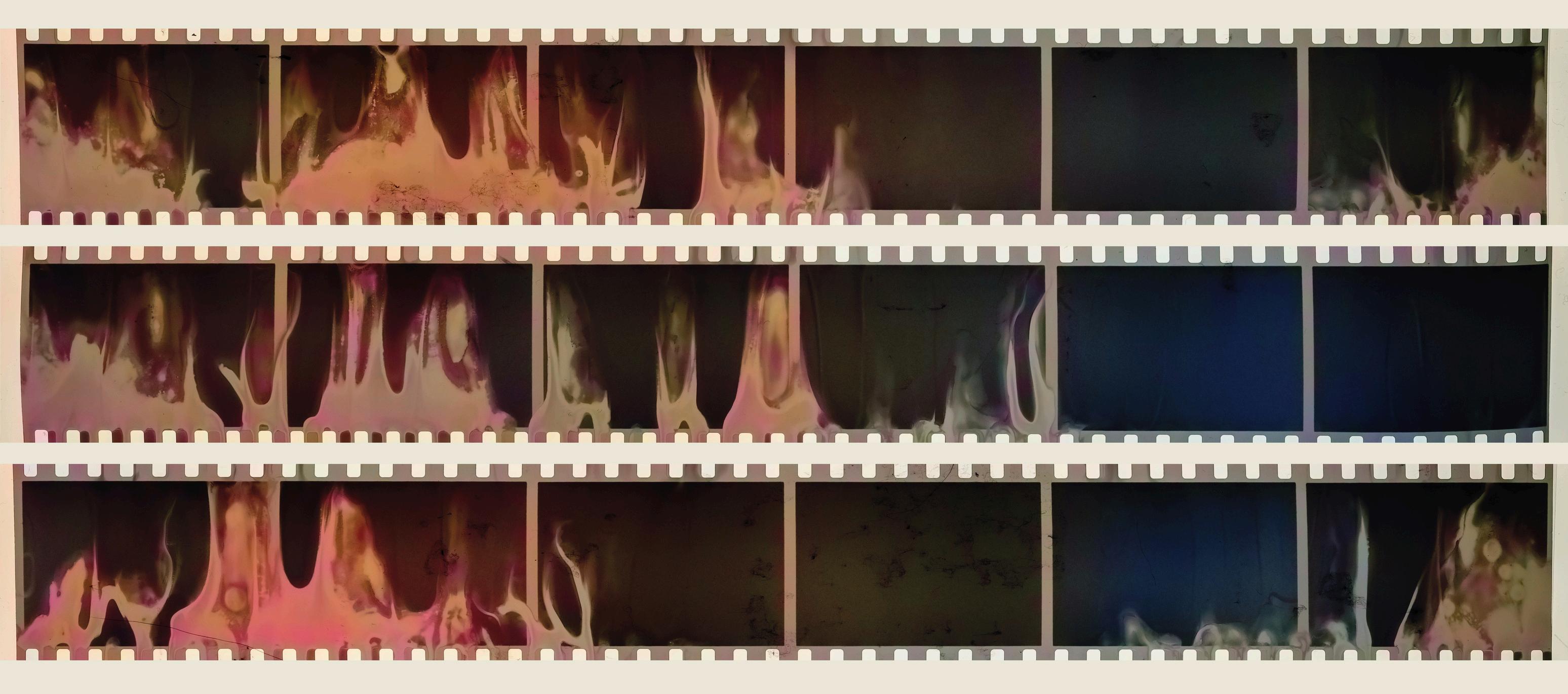
INTERACTIVE VIDEO FOR FASHION FILM
INTERACTIVE VIDEO FOR FASHION FILM
STRENGTHS
Gamified,user-guidedexperience
Trackabledataanalytics
Shareableonmultipledigitalmediums
LargerROIduetohigherlevelsofengagements
OPPORTUNITIES
Dataprocessingistakingoverfilmnarrativeinthefashionfilm industry
Interactivevideoprovidesbrandswithdatatobetterunderstand consumerbehaviorsandpreferences
Consumerspreferdigital,personalizedinteractionswithbrands
Growthofe-commerceanddigitalchannels
WEAKNESSES
Additionalproductioncostduetotheneedforsoftware
Requiresparticipationfromtheuser
Strategyrequiredtoensureoptimalengagement
Somesoftwareshavelimitedshareability
THREATS
Fashionfilmisknownforcompellingstories,whichcouldbelimited bytheuseofinteractivevideo
Similargamifiedexperiencesavailablewithinthemarketthrough platformssuchastheMetaverse
Post-pandemic,consumershavegravitatedtowardsin-person experiences
Overpopulateddigitallandscape
INTERACTIVE VIDEO FOR FASHION FILM
STRENGTHS
Gamification is a marketing technique that involves using game-like elements to engage and motivate customers, making it an effective tool for driving sales and increasing brand loyalty. According to market research, 87% of viewers use more than one device at a time (Parker). Viewer activity increases by an astounding 591% when interactive video is used because of the gamified experience it creates (Parker). Data analytics help to make the connections between view rates and conversions (Parker). With linear video, only view rates can be tracked (Parker). Analytics is an essential part of marketing because it helps brands gain insights into their consumers' behaviors and preferences and measure the effectiveness of campaigns. Additionally, depending on the software used to produce interactive videos, published videos can be shared across multiple digital mediums including websites, social platforms, emails, CRMs, and messaging (Hendrik). Interactive video for fashion film would also provide a larger return on investment as it would provide higher levels of engagement and better consumer insights.
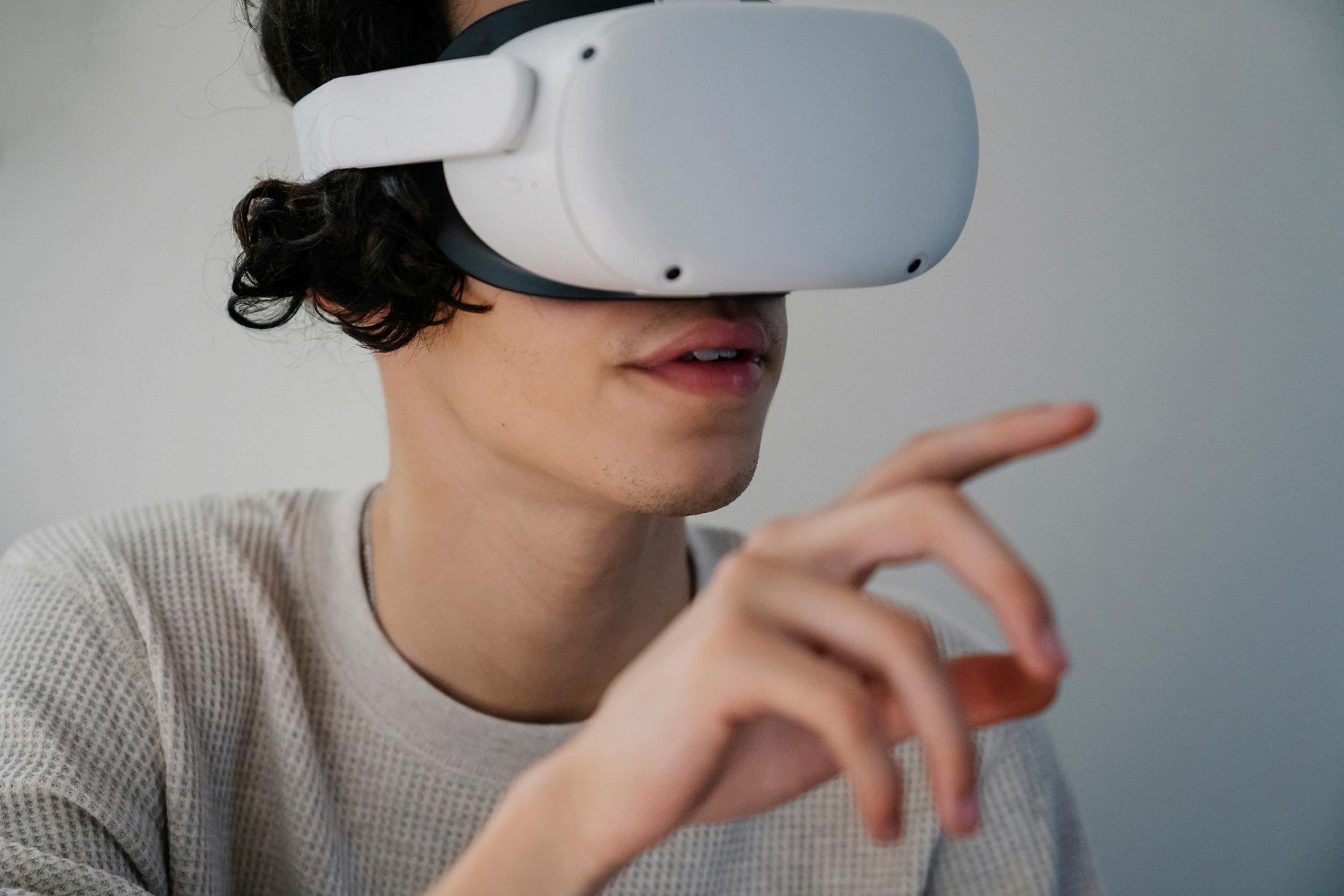
INTERACTIVE VIDEO FOR FASHION FILM

WEAKNESSES
Interactive video for fashion film would increase production costs because of the need for software to create the interactivity. There are many options within the market offering a broad range of prices. It is important for brands to consider the objectives and scope of the project when selecting a software. The user must participate in the interactive experience, which for some may not be ideal (Onkes). This also could affect conversion rates if a user clicks on a video with no intention of interacting. To provide an optimal engaging experience, strategy is key (Onkes). Brands should consider how they want users to engage with the content by including elements such as product hotspots, storyline branching, and drag-and-drop functionality (Hendrik).
Another weakness of interactive video for fashion film is the ability to share across platforms. Software selection has a direct relationship to shareability. Brands will need to consider what platforms the interactive videos will be shared on to ensure they purchase a software that fits their needs.
INTERACTIVE VIDEO FOR FASHION FILM
OPPORTUNITIES
Data processing is taking over film narrative in the fashion film industry (ReesRoberts). Brands are more conscious than ever of shares and views on published fashion films, which provides brands an opportunity to use interactive video to expand their data analytics on a larger scale. Interactive video takes data analytics to the next level in the fashion film industry by tracking duration and conversions and providing insights on consumer behaviors and preferences based on clicks. The next generation of consumers prefer personalized experiences, which interactive video for fashion film can provide by allowing them to interact with video content and make selections. The luxury market has seen a growth in e-commerce and increase in the use of digital channels for marketing. Interactive video fits well within both landscapes because it provides shoppable moments and can be published across multiple digital platforms.

INTERACTIVE VIDEO FOR FASHION FILM

THREATS
Fashion film has a history of providing users with compelling stories which could be limited by interactive video. Interactive video does provide branching, which allows the user to choose the direction of the story but depending on how brands leverage interactive video, there could be a shift away from this tradition. The Metaverse is growing in popularity among consumers and luxury brands. This platform provides consumers with a gamified experience different from interactive video, but this could pose a threat to the reach and effectiveness of interactive video for fashion film. Additionally, consumers have gravitated towards in-person experiences following the pandemic. Interactive video for fashion film will need to convince consumers that this experience is a substitute to in-person experiences with brands. The digital landscape is overpopulated with platforms, opportunities to interact, and content. This could pose a challenge to brands using interactive video for fashion film to differentiate themselves from the rest.

CHAPTER 2 CONSUMER RESEARCH

CUSTOMER SEGMENTS

Understanding the characteristics and preferences of consumers is vital to brands. This allows brands to strategically market to the unique needs of each target audience. Additionally, as consumers get older, brands should analyze the next generation of consumers who often have a new set of behaviors and purchase decisions based on their experiences. This section looks at customer segmentation by both psychographics and demographics. Understanding how consumers fit within each of these segments will be essential to identifying opportunity and strategizing how to fill a white space in the market.

PSYCHOGRAPHIC SEGMENTATION OF LUXURY CONSUMERS

Psychographic segmentation is important to a brand’s marketing strategy because it provides insights to consumer preferences and behaviors. This segmentation method categorizes luxury consumers into groups based on their views of luxury goods and their purchase intentions instead of their demographics. Additionally, this section explores predictions of how these psychographic characteristics may influence consumer preferences for interactive video for fashion film.
PSYCHOGRAPHIC SEGMENTATION
EXCLUSIVES
The Exclusives psychographic consumer views luxury as prestige, status, and exclusive and makes purchase decisions based on rarity and uniqueness (Dijkstra). They live in Europe and Asia and value new knowledge and are more likely to be well-educated and aspire to continue learning (Dijkstra). This segment is most interested in limited edition and brand collab items, so brands should highlight the exclusivity of products when targeting these consumers (Dijkstra).
The Exclusives consumer segment would likely want to interact with brands through fashion film experiences that allow them to develop products and select other brands to collaborate with. This would speak to their preference for brand collaborations and limited-edition items. Allowing these consumers to control product development would satisfy their need for rare and highly exclusive items.

PSYCHOGRAPHIC SEGMENTATION
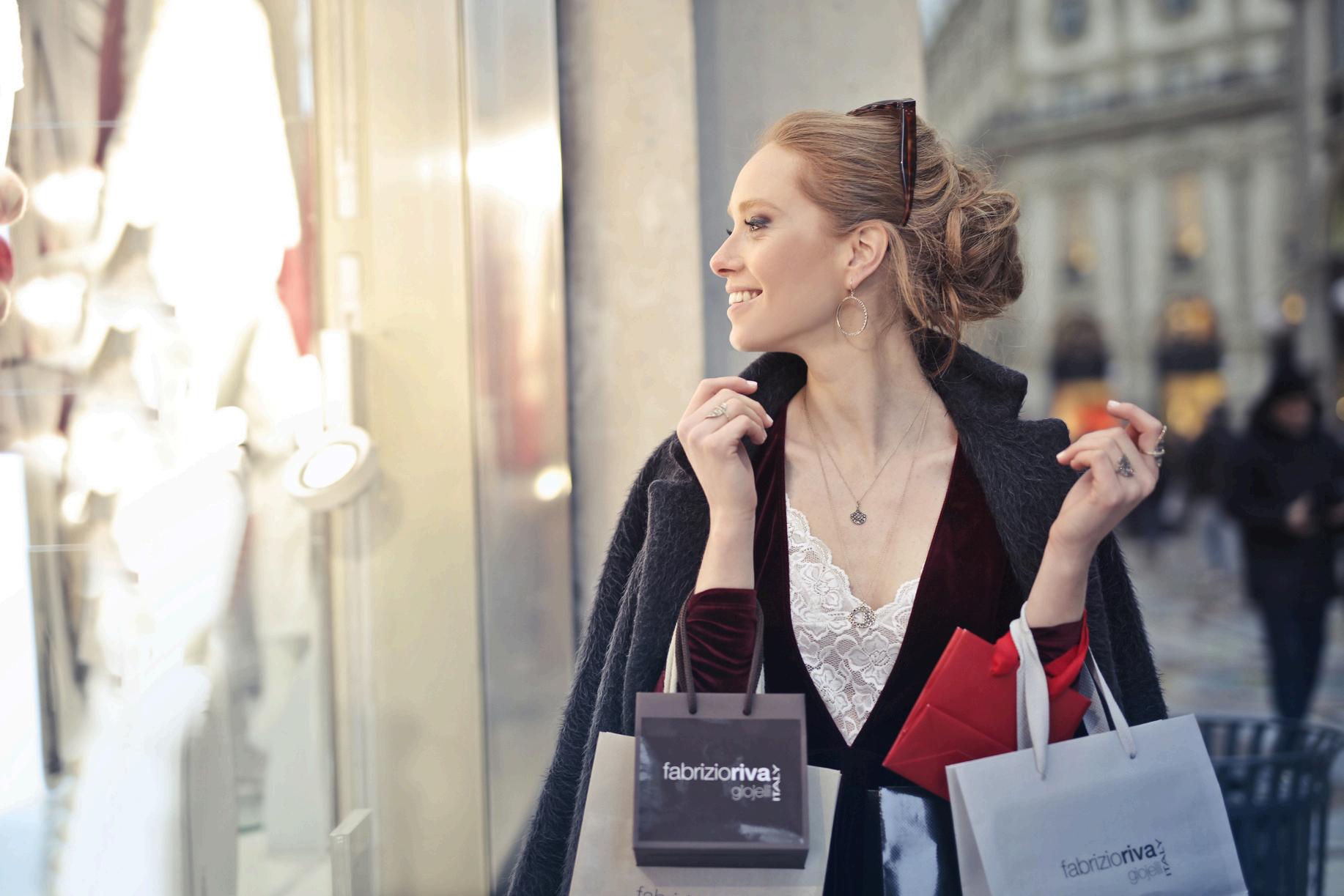
The Indulgents segment may not be frequent luxury consumers as they purchase products as a reward or celebration of milestones although occasionally, they will still make luxury purchases even when they do not need it (Dijkstra). They perceive luxury as expensive, so there is an emotional connection associated with their purchase decision (Dijkstra). Indulgents account for 17% of global luxury consumers (Dijkstra). Brands can market to indulgent consumers by highlighting the emotional reward making a luxury purchase gives them (Dijkstra).
Interactive video for fashion film would engage Indulgents by providing an emotional connection to the products they interact with through this experience. It would allow them the feeling of ownership and pride through product development and outfit selection. This consumer group may also be interested in the ability to manipulate the direction of the story. It is likely this segment would be some of the largest participants of interactive video for fashion film because they enjoy luxury brands but are not frequent buyers. This could help deepen the brand loyalty relationship among this consumer group.
PSYCHOGRAPHIC SEGMENTATION
FASHIONISTAS
Fashionistas make luxury purchases to prove that they are trendsetters and are always on the lookout for the next best thing (Dijkstra). They are addicted to luxury products and do not give much consideration to their purchase decisions (Dijkstra). Instead, they prefer to make purchases on impulse and for attention (Dijkstra). Most fashionista consumers reside in the Middle East (Dijkstra). Targeting this audience requires brands to use methods outside of traditional media because they spend a lot of time outside of their homes (Dijkstra). They are also environmentally conscious, which does have some influence in the brand selection process, which means brands should also highlight sustainability when marketing to this segment (Dijkstra). Online shopping experiences should be optimized and mobile friendly to attract fashionistas (Dijkstra).
The Fashionistas would likely be the consumer group who is the most excited about interactive video for fashion film. They would appreciate multiple engagement opportunities such as model outfit selection and product development. Being trendsetters, having the ability to develop products would satiate their egos. However, this group would appreciate shoppable moments more than other consumer segments since they are frequent buyers. Therefore, it would be likely that they would want the ability to purchase their customized products or selected outfits.
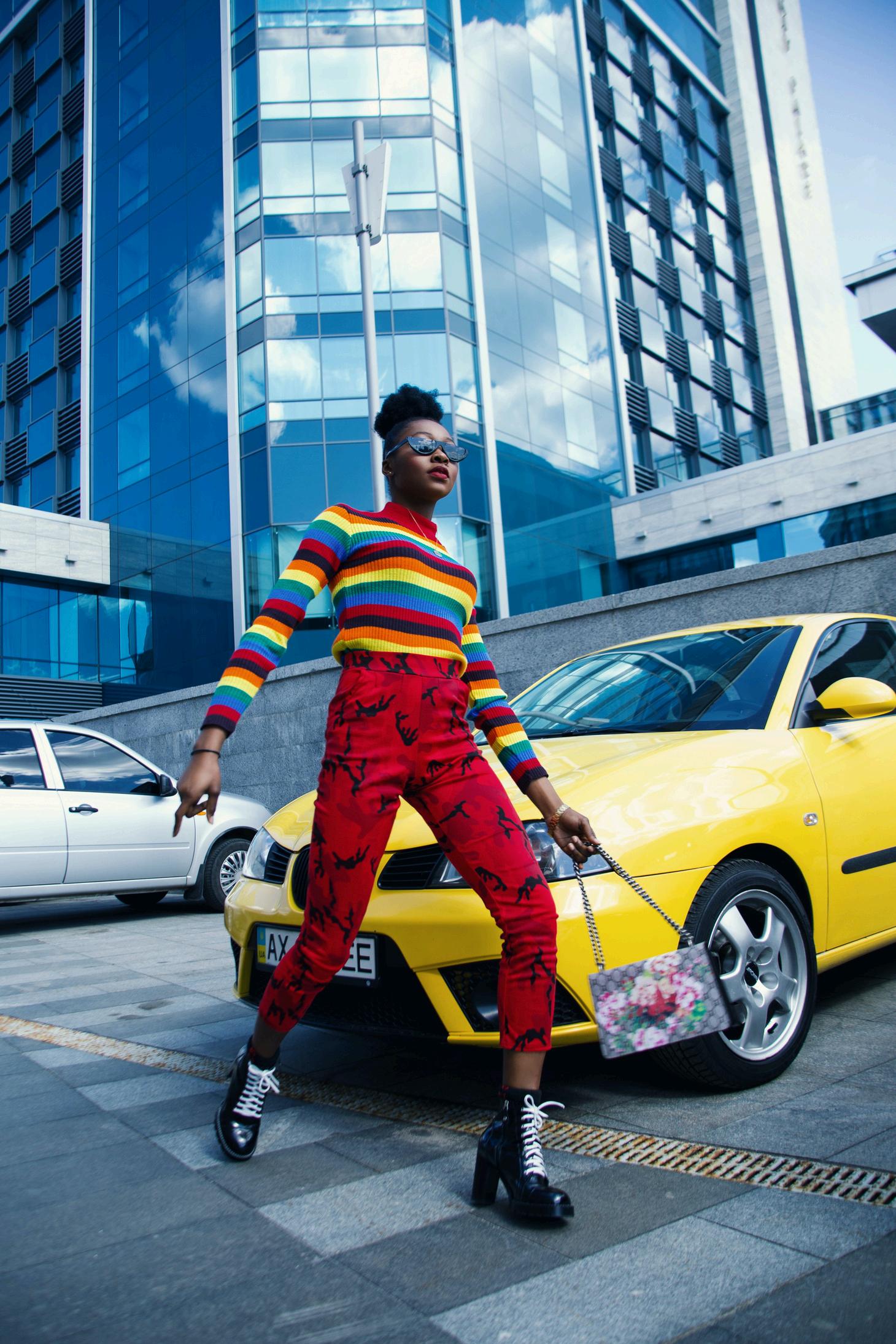
PSYCHOGRAPHIC SEGMENTATION
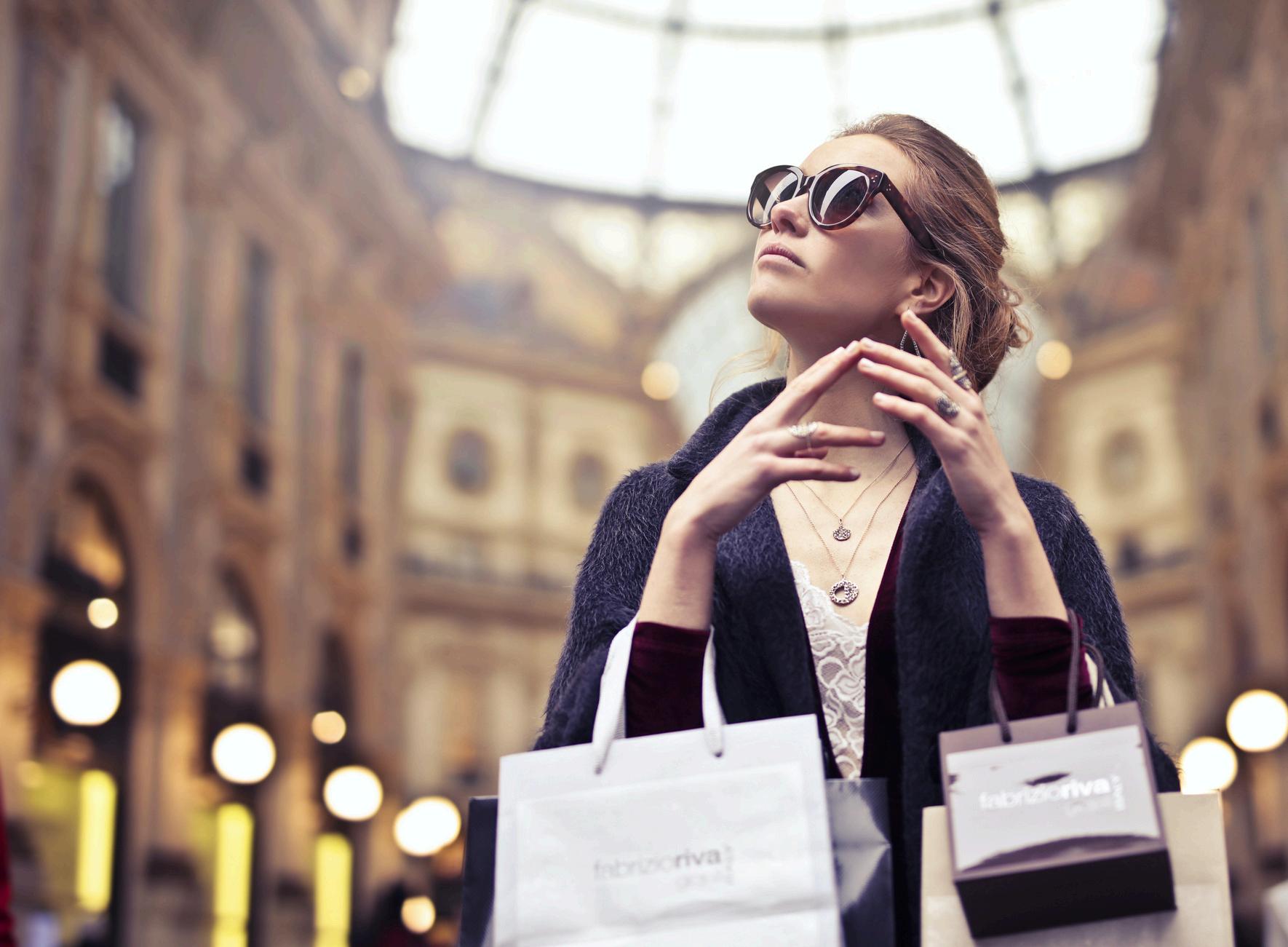
The Classics psychographic segment is attracted to timeless products and brands with a rich heritage (Dijkstra). They put much thought into their purchase decisions and typically own only a select few products of high value, focusing more on quality over quantity (Dijkstra). They specifically look for luxury items that can be passed down from one generation to the next (Dijkstra). This segment is older in age and primarily located in the European market (Dijkstra). They are brand loyal and demanding, which can make them more difficult to target (Dijkstra).
Classics would be more likely to engage in an interactive fashion film experience that highlights the brand’s heritage. This indicates that story direction would be appealing to this segment, and specifically, they would be interested in a documentary style fashion film experience. Based on the psychographics of this consumer group, they may also be interested in shoppable moments for items that exemplify the brand DNA and quality.
PSYCHOGRAPHIC SEGMENTATION
IMMATERIALS
Immaterials is the most difficult consumer group to market luxury to because they view luxury items as overpriced and superficial (Dijkstra). Instead, they prefer to purchase investments and are money-conscious (Dijkstra). Immaterials view luxury purchases as a waste of money that they would rather save (Dijkstra). They are least concerned with outward appearances and prefer experiences, making them consumers of the luxury hospitality market versus the luxury fashion market (Dijkstra).
The Immaterials may be the consumer group that needs the type of experience interactive video for fashion film would provide the most. They prefer experiences over luxury purchases but would likely still engage with brands in this manner to connect with luxury brands in a way they previously have not had the opportunity. The unique need of this consumer segment based on the psychographics is intangibility since they prefer to spend their money on experiences. This could allow brands to build awareness and loyalty by providing Immaterials with memorable experiences that feel independent.

PSYCHOGRAPHIC SEGMENTATION

Like Immaterials, the Essentials segment views luxury goods as unnecessary or superficial but they do make luxury purchases on occasion (Dijkstra). However, they view luxury purchases as an investment and realize luxury items are valuable (Dijkstra). The Essentials make up 15% of the global luxury market (Dijkstra). They are also an older audience who consumes a large amount of television each week, similar to the classics segment (Dijkstra).
The Essentials consumer segment would have a similar preference for interactive experiences with fashion film as those of the Classics and Immaterials. They seek luxury items as an investment opportunity which means they would likely appreciate interactive fashion films that highlight the brand’s heritage and provide shoppable moments. This kind of experience would also allow them to engage with luxury brands solely through an experience and since they only make luxury purchases on occasion, it would provide them with a brand experience that feels less committal than in-person.

DEMOGRAPHIC SEGMENTATION OF CONSUMERS
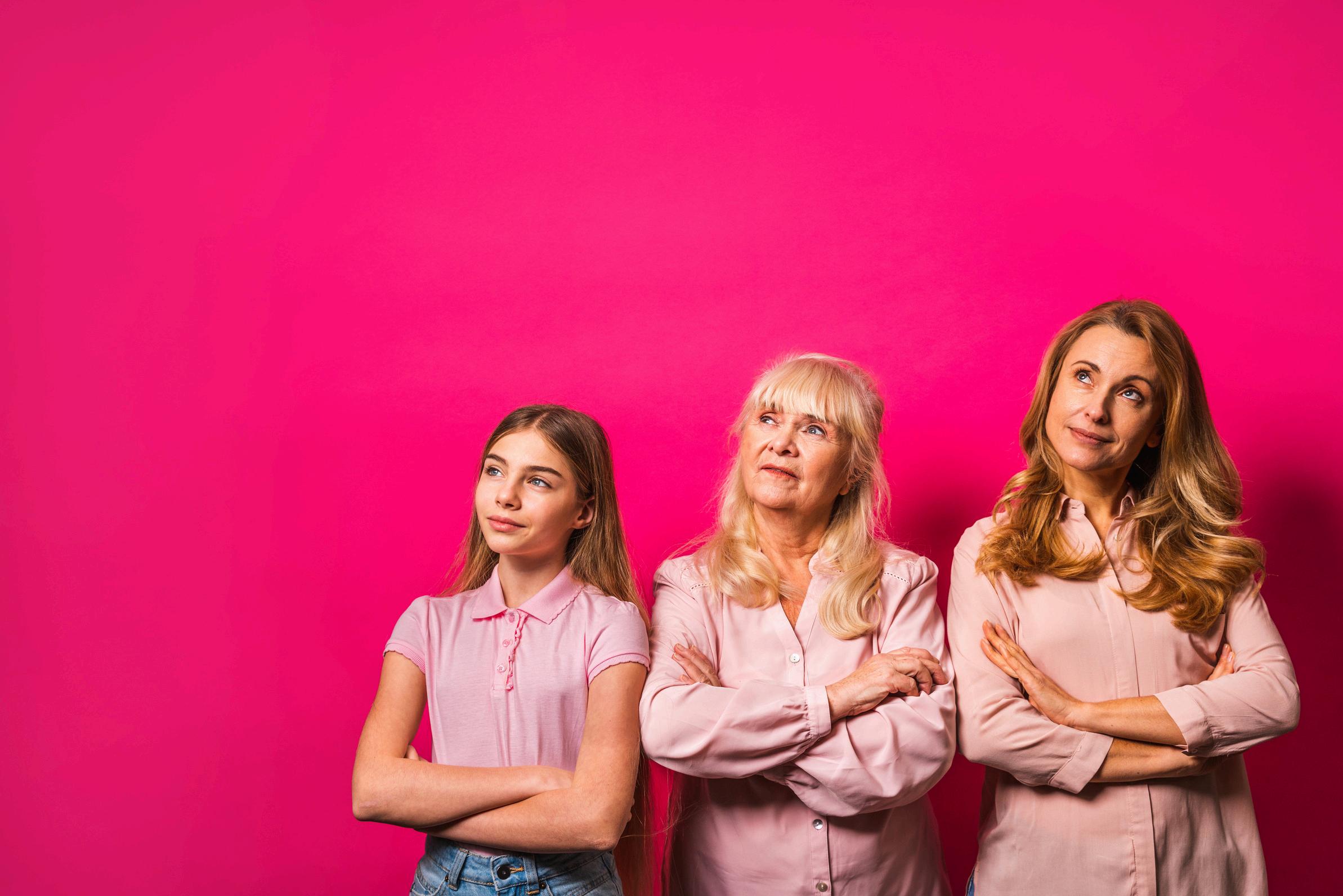
Demographic segmentation categorizes consumers based on which generation they are a part of. Each generation has its own unique preferences which requires brands to target them in different ways to cater to their needs. This type of segmentation is important because it also provides brands the opportunity to identify where these consumer groups overlap in preferences which would allow them to appeal to more than one target audience with initiatives.
DEMOGRAPHIC SEGMENTATION
GENERATION ALPHA
Generation Alpha includes anyone born in 2010 or after and is on pace to be the largest generation in history (Winter). This generation has never known life without technology, which heavily influences their lives (Winter). Technology has replaced in-person social interactions for them largely due to the Covid-19 pandemic (Winter). This generation has been given the nickname Gen C, or Generation Covid, due to the long-term, significant social, economic, psychological, and educational impact the pandemic will have (Winter). They will view remote work as a normal way of life (Winter). The pandemic will make them more creative and resilient individuals who value family and everyday “superheroes” more than previous generations (Winter). This is largely because they have a heightened awareness of the world around them, care deeply about social issues, and as a result, grow up faster (Winter). This maturity also contributes to a longer attention span, which is around eight minutes, and greater than their predecessors. (“Move Over Gen Z, It’s Time for Gen Alpha”).

DEMOGRAPHIC SEGMENTATION
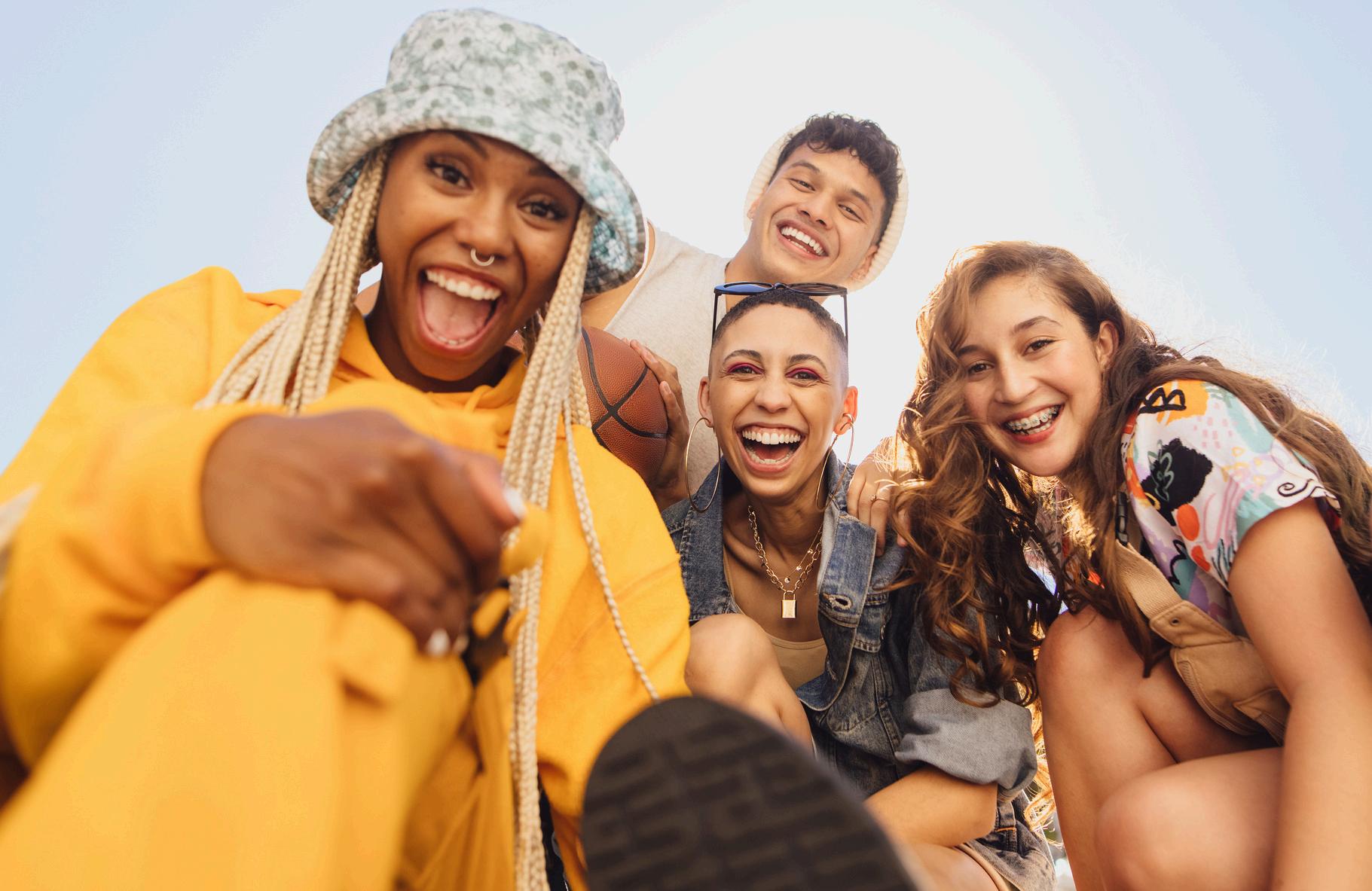
Generation Z includes anyone born between 1997 and 2009 (Eldridge). Gen Z is the most diverse generation of Americans with many of them growing up in homes with single, multiracial, and LGBTQ+ parents (Eldridge). They reside in cities and metropolitan areas and are less likely to move than previous generations (Eldridge). This generation has been shaped by the Great Recession and the Covid-19 pandemic (Eldridge). These experiences have made them ambitious and financially focused (“What Are the Core Characteristics of Generation Z?”). They are more likely to graduate high school, attend college, and are careful when making career decisions (Eldridge). They have similar views to Millennials on social and policy issues and are trailblazers for the use of gender pronouns (Mitchell). Gen Z prefers sustainably conscious brands and products (“What Are the Core Characteristics of Generation Z?”). They are digital natives who grew up with technological influences such as the iPhone and social media (Eldridge). As a result, they are eager to interact within the digital landscape but have the shortest attention span of any generation (Law).
DEMOGRAPHIC SEGMENTATION
MILLENNIALS
Millennials are anyone born between 1981 and 1996 (Zelazko). They grew up during the rise of the Internet and adapt quickly to new technologies (Zelazko). More Millennial women than men hold a bachelor’s degree or higher education (Zelazko). They are the first generation to delay milestones such as purchasing a home, getting married, and having children (Zelazko). Over 90% of Millennials are employed and they have a combined spending power of $2.5 trillion (Molenaar). Online shopping is most popular among this generation, and they enjoy virtual gaming, which increased during the pandemic (Molenaar). They prioritize self-care and their decisions are influenced by societal and environmental issues (Molenaar). Since social media has become a significant part of their lives, Millennials are used to constant consumption of information, which has shortened their attention spans to an average of 12 seconds (Marcus).

DEMOGRAPHIC SEGMENTATION

Generation X is anyone born between 1968 and 1980 who grew up with more dual-income families than current generations (McKenna). However, this was the first generation to see an increase in single-parent households (McKenna). They also are more technologically savvy because the computer was introduced during this generation (McKenna). Gen X has more liberal views than previous generations (McKenna). They are resourceful, independent, and can easily maintain a work-life balance (McKenna). They are the most brand loyal generation and prefer nice things, such as luxury items and in-person shopping experiences (Lamb). Gen X’s primary social media platforms include Facebook and YouTube (McKenna).

BEHAVIORAL SEGMENTATION OF CONSUMERS

Behavioral segmentation categorizes consumers based on the behaviors they exhibit, which includes their purchasing decisions and how they interact with brands (DeAsi). This is incredibly vital to personalized marketing because it allows brands to observe the actions of customers (Karnes). Behavioral segmentation helps brands to increase personalization, appropriately allocate budgets, and forecast for the future (Karnes). This section provides an overview of the various groups in which consumers can be segmented based on their behaviors.
BEHAVIORAL SEGMENTATION
USAGE BEHAVIOR
This segmentation analyzes consumers from a consumption perspective. Some of the main observations are how often customers are purchasing a product or using a service, what products or services they are purchasing, and how they are using the product or service. Brands use purchase behavior primarily to forecast or track demand (Karnes). This also allows brands to effectively time their marketing initiatives by understanding consumers’ purchase, usage, and consumption behaviors (Karnes). Usage behavior has a lifetime value because it also provides predictive insight to customer loyalty (DeAsi).
CUSTOMER JOURNEY STAGE BENEFITS SOUGHT
This behavioral segmentation observes what stage a new or existing customer is currently in (DeAsi). It is important to understand where a consumer falls in their customer journey to identify obstacles and opportunities for improvement in stages where consumers may not be progressing (DeAsi). Additionally, it allows brands to increase conversions by aligning communications and personalizing experiences based on where a consumer is in their journey (DeAsi).
Consumers seek benefits that are based on personal preference. Some consumers may prefer convenience like ordering through a mobile app, while others prefer to experience brands in person (Karnes). There is a way for brands to cater to all consumer preferences but first, the variance of benefits sought by consumers must be understood (Karnes). Additionally, benefits sought segmentation defines the motivating factors behind purchase decisions (DeAsi).
INTEREST
Consumers seek benefits that are based on personal preference. Some consumers may prefer convenience like ordering through a mobile app, while others prefer to experience brands in person (Karnes). There is a way for brands to cater to all consumer preferences but first, the variance of benefits sought by consumers must be understood (Karnes). Additionally, benefits sought segmentation defines the motivating factors behind purchase decisions (DeAsi).

CHAPTER 3 PRIMARY RESEARCH
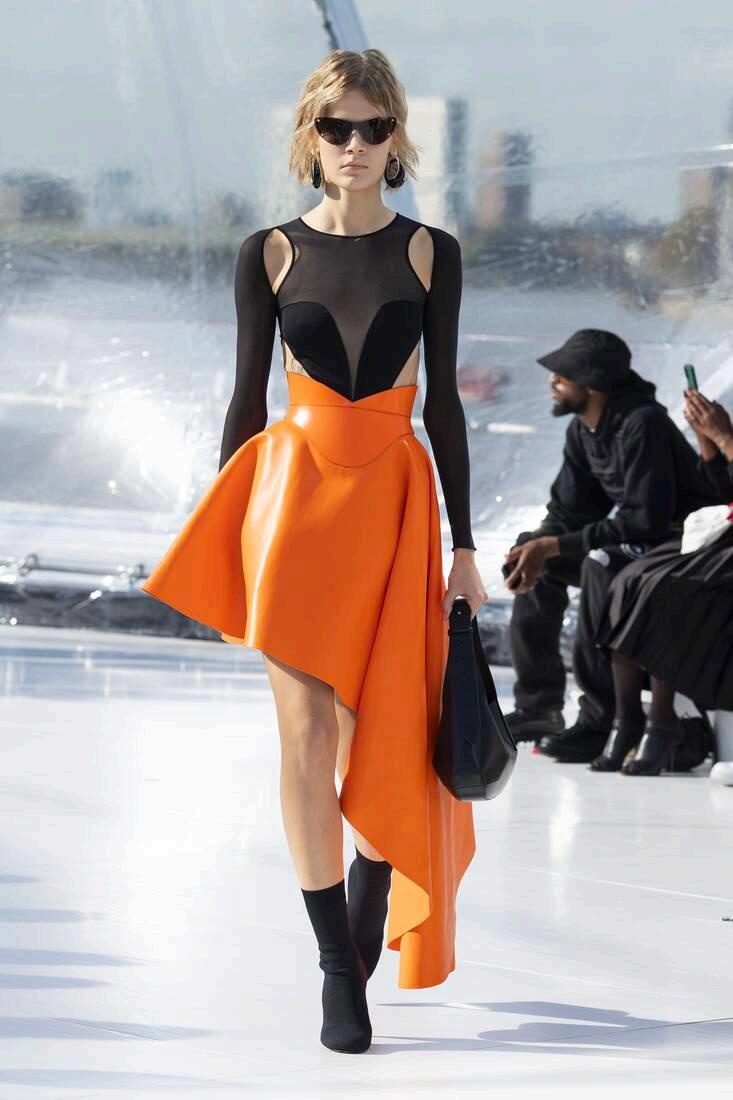
Thorough secondary research was conducted to assist in setting the objectives of the primary research. Resources for secondary research include library and industry databases, academic readings, major publications, and company websites. The primary research includes a survey, case study, and focus groups.
The purpose of this primary research was to collect information from consumers regarding their familiarity with both fashion film and interactive video. The initial survey was distributed via social media channels, Instagram and LinkedIn. It was run as an ad on Instagram for a total of seven days, shared to a LinkedIn research page, and emailed to a couple of faculty members at SCAD and Elon University to disperse to their students. Parameters for the survey were consumers primarily between the ages of 18 and 77 to best identify areas of opportunity and the target audience for a case study.
There will be a subsequential case study which consists of executing production of an interactive video for fashion film to fulfill a consumer need to connect more deeply with brands. Once production is complete, the interactive video will be shared with participants of this survey who opted-in by sharing their name and email address. Focus groups will be conducted to gauge the effectiveness of interactive video for fashion film, which will assist in the final stage of this research.
SURVEY OBJECTIVES
The overall objective of this primary research was to determine consumer familiarity with both fashion film and interactive video. However, it was equally relevant to understand their awareness of luxury brands, age demographic, and their initial thoughts on implementing interactive video for fashion film. Below are the survey questions and goals of each:
Please provide your age.
The response options for this question were grouped by age demographic based on which generational category a consumer would be classified (i.e., Under 18 would be Generation Alpha, 18-25 would be Generation Z, etc.). It is important to capture this information because while all responses help to glean overall consumer awareness of luxury brands and familiarity with fashion film as well as interactive video, this allows the data to be filtered down based on the specific age groups to determine trends and to select the target audience.
Are you familiar with luxury fashion brands?
This was a yes or no question upon which participants would be guided to the next question based on their response. If they answered yes, they were asked to provide examples of which luxury brands they were most familiar with. It was important to not only determine consumer awareness of luxury brands, but which brands they are most familiar with.
Are you familiar with fashion film?
This yes or no question was to gauge consumer familiarity with fashion film. Participants who selected yes were asked to provide names of the brands from which they have seen fashion films. Consumers who answered no were asked to view an example of a fashion film titled “UNHINGED” by BATSHEVA. Following this example, participants were asked to complete a rating scale of one to five to determine if the example enhanced their understanding of fashion film. A rating of one was for strongly disagree and a rating of five was for strongly agree.
SURVEY OBJECTIVES
Are you familiar with interactive video?
Like the previous question, participants were asked to answer yes or no, with an interactive video example being provided for those who indicated no. There was a rating scale of one to five for participants to share if the sample interactive video increased their understanding. Again, a rating of one meant they strongly disagree and a rating of five meant strongly agree.
Would you like to see interactive video implemented into the fashion film industry?
After determining consumer understanding and familiarity of fashion film and interactive video, it was necessary to determine whether there is interest in seeing interactive video implemented into fashion film. This was a vital question in evaluating consumer perception of this opportunity.
If luxury brands implemented interactive video for fashion film, do you feel you would be more likely to watch fashion films?
Participants had the options of yes, no, and maybe to respond to this question. The goal of this question was to project whether consumers would be willing to participate in the user-guided experience that interactive video provides if it is leveraged for fashion film. The responses to this question can also be compared against the response to questions two and three to determine how interactive video might increase brand awareness and view counts for fashion film.
What user-guided experiences would you like to see in interactive video for fashion film? Select all that apply.
For this question, participants were able to select from options which include shoppable moments, story direction, outfit selection, product development, and other. If they selected other, they could provide another interactive idea. This question is essential to determining the types of user-guided experiences consumers are looking for when engaging with brands. It is equally important to the production of the case study portion of this thesis to provide an example of what popular user-guided experiences could look like in interactive video for fashion film.
SURVEY SUMMARY AND ANALYSIS
SURVEY PARTICIPANTS FAMILIAR WITH INTERACTIVE VIDEO
SURVEY SUMMARY AND ANALYSIS
INTERACTIVE VIDEO FOR FASHION FILM
SURVEY SUMMARY AND ANALYSIS
POINTS OF INTERACTIVITY
OutfitSelection
ProductDevelopment
It is apparent from this primary research that there is an opportunity for brands to leverage interactive video for fashion film to engage the next generation of consumers. It has the potential to fulfill a consumer need, delivering personalized user-guided brand experiences to increase awareness. Consumers prefer the ability to make outfit selections for the models and control product development such as changing fabrics, colors, and patterns.
ShoppableMoments
StoryDirection
Number of responses
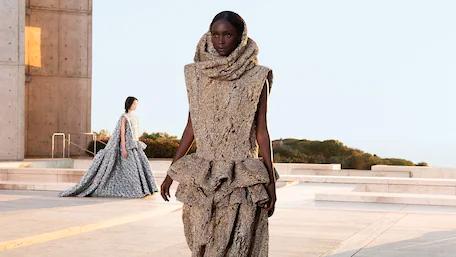
CHAPTER 4 KEY FINDINGS
Primary research shows that 69.8% of consumers surveyed are not familiar with fashion film. Fashion film has traditionally been delivered in linear video format with shorter samples being distributed across social media platforms to build anticipation for campaign launches (Rees-Roberts). Most of the fashion films that exist in the digital world today include documentaries, runway shows, and other genres as outlined which can be categorized as documentary, compelling story, entertainment, and emotionality. Regardless of the category, luxury brands use fashion film to capture the movement of clothing collections through an artistic or cinematic lens (Rees-Roberts). Based on the findings of this research, it is important to further classify fashion film based on the brand’s objectives and the overall experience, which can be broken down into consumer-driven and brand-driven. Consumer-driven experiences aim to connect with the consumer by fulfilling a want or need, as entertainment and emotionality fashion films do. Brand-driven fashion films create a unique experience that brings the consumer into the world of the brand with documentaries and compelling stories.
Survey participants were primarily Generation Z consumers who support interactive video for fashion film but lack an awareness of luxury brands. This matters because Gen Z is the next generation of consumers, expected to pass Millennials as the largest consumer spending group by 2026 (“Businesses and Gen Z Consumers | NCR Primer”). Secondary research shows that luxury brands are using fashion film to build an online presence. The brands with the strongest online presence (Chanel, Gucci, and Louis Vuitton) are the same brands highest referenced by survey respondents when asked to share which luxury brands they are most familiar with. There were no survey respondents
KEY FINDINGS
who indicated familiarity with Alexander McQueen, which aligns with the weak online presence for the brand when compared to its competitors. Brands can strengthen online presence by leveraging interactive video for fashion film, which encourages active viewing to connect with the next generation of consumers in their native, digital environment.
Market research shows that 87% of viewers are using multiple screens at once when watching a linear video, like fashion film (Parker). Interactive video increases active viewing by 591% when compared to linear video and it is 32% more memorable because it engages the viewer (Parker). This validates why 86.3% of survey participants for the primary research indicated they would like to see interactive video implemented for fashion film.
Interactive video software platforms are used to develop and host interactive video content. Each platform is similar in features and capabilities but vary greatly in price. Most pricing structures are billed on a quarterly or annual basis because of the need for hosting the video within the platform. This means, if brands want their interactive videos “live,” they will need to budget for the annual cost of the platform on a recurring basis. However, brands should look at this pricing structure as they would any other software licensing, as one price for unlimited productions. Alternatively, some platforms such as Wirewax offer creative services and will use video assets provided by the brand to bring the interactive video to life. Another option is to work with a creative agency that is already using an interactive video. Most luxury brands outsource the production of their fashion films to industry professionals, like directors, makeup artists, editors, and producers (ReesRoberts).
There are many features of interactive video that create points of interactivity for the viewer. The types of interactivity, as discussed in section 1.5.2, include branching, switchable videos, 360-degree videos, hotspots or clickable buttons, quizzes, and input forms (“Interactive Video”). Branching and switchable video are similar concepts as both alter the storyline. Branching provides options for viewers to select from, which changes the outcome of the story, and switchable video toggles between two storylines, providing a secondary perspective (“Interactive Video”). Hotspots, or buttons, allow users to make selections, access external links, and shop products that are in the video (“Interactive Video”). Quizzes provide an assessment of the viewer’s comprehension of the video content, and input forms collect information from the user to allow brands follow-up opportunities (“Interactive Video”). The userprovided information is often used for email campaigns or newsletter subscriptions (“Interactive Video”). It is important that brands plan points of interactivity to know which of these features will need to be used when producing the interactive video. The brand will need control over this creative aspect to ensure the objectives of the fashion film are being met (i.e., consumerdriven or brand-driven).
Interactive video offers a gamified, user guided experience which caters to the personalized experiences consumers are looking for from brands. Interactive video does have additional production costs because a special software must be used to create the interactivity, but the conversion rates are much higher, which would indicate a higher return on investment. To clarify, consumers click on by consumers at nearly ten times the rate of Google Display Ads, YouTube
KEY FINDINGS
Annotation ads, and Banner ads (Parker). Brands should be strategic in leveraging interactive video to ensure they are maintaining the objectives of the fashion film while better engaging the consumer. Based on primary research, consumers most prefer the ability to select outfits for the model and product development options as points of interactivity for an interactive fashion film.
Fashion film provides a narrative through an artistic or cinematic lens which caters to the type of gamified experience females and Generation Z prefer to participate in. Secondary research indicates that interactive video will be popular among female and Generation Z consumers. Generation Z consumers are digital natives who are always connected, even on the go (“Businesses and Gen Z Consumers | NCR Primer”). They prefer personalized experiences which interactive video can provide by allowing them to engage with brands through user-guided interactivity. Interactive video also provides brands with trackable data such as conversion rates, dwell times, and interactions (Parker). This is useful in providing brands with better insights to consumer behaviors and preferences. These types of analytics can assist in predicting demand, developing products, and creating future consumer engagement opportunities based on behavioral segmentation.
CHAPTER 5 STRATEGY
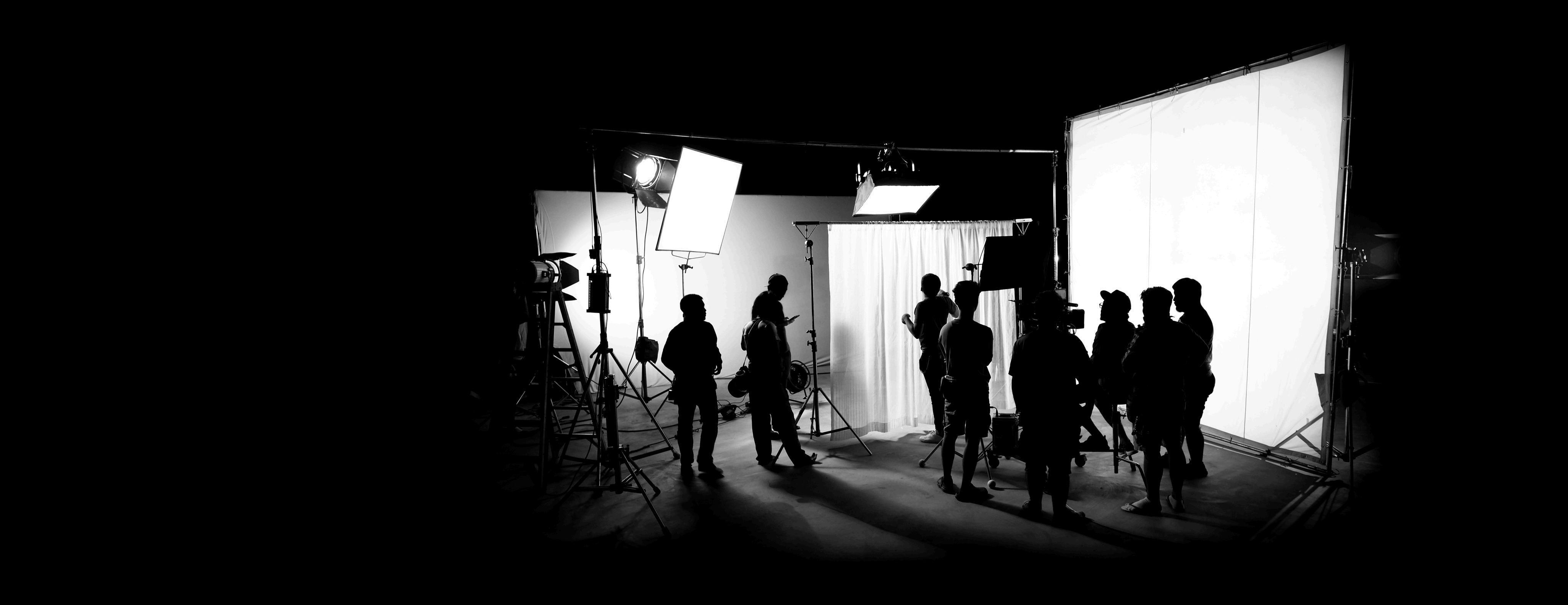
STRATEGY

Interactive video for fashion film is proposed because research indicates there is an opportunity to enhance online presence through personalized, userguided experiences which will drive brand awareness, while increasing brand insights to consumer behaviors and preferences with data analytics. To develop a framework for how luxury brands can leverage interactive video for fashion film, a case study will be used to apply the framework and demonstrate what an interactive fashion film experience could look like.
The case study entails the production of an interactive fashion film for a brand selected based on secondary and primary research findings. The brand, Alexander McQueen, has a strong brand image and rich heritage, but it lacks both brand awareness among the next generation of consumers and a strong online presence. The brand currently uses fashion film to showcase its collections in an artistic, cinematic way. Following the production of the interactive fashion film, focus groups will be conducted to help determine consumer reactions to this type of experience from a luxury brand.
Using this case study to apply the framework will provide an example of an interactive fashion film and feedback from consumers to assist brands in deciding whether interactive video will fit within their fashion film landscape.
The case study and primary research aims to showcase how interactive fashion film can fulfill a unique need by providing experiences that engage consumers in a strategic way to drive memorability, conversion rates and ultimately, brand awareness. Brands will also be able to leverage data analytics to better predict consumer behaviors and preferences to determine demand and generate new product developments and future engagement opportunities.

INTERACTIVE VIDEO FOR FASHION FILM FRAMEWORK
PURPOSE OF FRAMEWORK
The framework for implementing interactive video for fashion film is cyclical in nature. As with introducing any new technology, many factors should be evaluated and adjusted often. Technology constantly evolves and when leveraging it for marketing purposes, the strategy should be assessed frequently to ensure optimal engagement opportunities are being provided and the needs of the target audience are being fulfilled. While there may be additional costs associated with the production of an interactive video, planned or existing fashion film assets can be used to create this interactive experience. Additionally, interactive video gives brands insights to consumer behaviors and preferences. These insights can be used for behavioral segmentation to personalize marketing initiatives and better address consumer needs, predict demands, and forecast trends. The advantage of using the data analytics from interactive video is these are developed in real-time. Interactive video for fashion film is unique from other interactions consumers have with brands in that it provides a personalized experience to allow the consumers to engage with brands while forming an emotional connection, enhancing brand awareness, and driving brand loyalty.
This framework is the roadmap for how brands can create interactive fashion films using their existing pre-production processes, at a minimal additional expense. It requires a few additional steps during pre-production planning for fashion film but provides an innovative alternative for brands to increase their online presence, ultimately driving brand awareness through an engaging consumer experience. The idea behind this framework is that traditional fashion film can co-exist with these interactive assets but will capture the attention of a different audience.
MAKE A DECISION
Fashion Film Concept MAKE A DECISION
The first step is that brands decide whether they want to create an interactive fashion film. Once a brand has a concept for the fashion film it plans to produce, it should then decide during preproduction planning whether it wants to create an interactive video as well. This should be completed before developing a shot list because some additional film and photography shots may be needed to produce the interactive video.
Brands may consider cost and audience as factors for reaching their final decision. However, the cost should constitute less than 3% of the overall production budget. The target audience was likely established during the development phase for the fashion film, but the more important factor is the objective of the fashion film. Therefore, these should not be strong considerations as interactive video should be viewed as supplementary to the fashion film, similar to planned social media campaigns.
CONSIDER OBJECTIVES
Once a formal decision to proceed with creating interactive video for fashion film is made, brands should consider the objectives of the film. For this framework, fashion film categories have been classified based on two criteria, consumerdriven and brand-driven. Consumer-driven objectives are those that aim to fit the needs of the consumers. Brand-driven objectives bring the consumer into the world of the brand.
CONSIDER OBJECTIVES
Objectives
Consumer-driven
Brand-driven
CONSIDER OBJECTIVES
Objectives
Consumer-driven
Brand-driven
Entertainment Emotionality Documentary Compelling Story
CONSIDER OBJECTIVES
Fashion films that fall into the entertainment or emotionality categories are based on consumerdriven objectives. Brand-driven fashion films can be categorized as documentaries and compelling stories. Brands must consider the objectives of the fashion film to move forward in the framework, but this is also evaluated during the pre-production phase of the fashion film process.
DEFINE POINTS OF INTERACTIVITY
Brands can define points of interactivity. Notice that these are color-coded in association with the objectives. The points of interactivity should be strategically aligned with the objectives of the fashion film as to not dilute or distract from what is being conveyed. The appropriate points of interactivity for consumer-driven fashion films are outfit selection, product development, and shoppable moments. These resemble interactions the consumer would have with the brand during an in-store experience. For brand-driven fashion films, story direction is the only appropriate point of interactivity of this framework. This will still engage the consumer, but the purpose of brand-driven fashion films is to provide the consumer a lens into the brand through a unique experience. The “X” category is a placeholder for other points of interactivity brands may consider beyond the four outlined options. It is important for brands to define these points of interactivity in the pre-production phase because it will determine how the interactive video is developed.
DEFINE POINTS OF INTERACTIVITY
Points of Interactivity
Story direction
Outfit selection
Product development
Shoppable moments X
DEFINE POINTS OF INTERACTIVITY
Points of Interactivity
Story direction points of interactivity can be accomplished using branching and switchable video. Each of these can be accomplished using film assets. Branching can use multiple cuts of video from the same final cut. For example, if a brand is developing a documentary on its history, they could use branching to split the topics of the documentary and allow the viewer to select which topic they wish to view. Switchable video usually provides the viewer an alternative perspective. This means brands would need two final cuts of the same video in alternate views to create a switchable video. Think of this as two videos playing at the same time, but the viewer can toggle between experiences by holding down a button on their keyboard.
DEFINE POINTS OF INTERACTIVITY
Points of Interactivity
Branching
Hotspots
Outfit selection and product development interactive experiences can be created using branching and hotspots. Shoppable moments use hotspots to allow consumers to make purchases from the interactive video. When using branching, brands will need video assets to accomplish the points of interactivity. Hotspots can be created using photos, though this is not always required. It is best served for outfit selection and product development but can also be used for shoppable moments.
DEFINE POINTS OF INTERACTIVITY
Brands can define a point of interactivity that can leverage one or multiple interactive experiences. When defining points of interactivity, “X” provides brands an opportunity to leverage other features of interactive video they may not otherwise use based on the pre-defined points of interactivity within this framework. An additional type of interactive experience is 360-degree video, which can be accomplished using either photo or video assets. A compilation of photos can be used to create a 360-degree video the same as it is created with video by providing 360-degrees of camera angle views. This is an important note for brands planning to use 360-degree video, as they will need to create a shot list that captures all 360 degrees. Additionally, brands can use quizzes and input forms which would require no additional assets. Quizzes can be used to assess consumers understanding of the content of the video or to survey consumers. Input forms can be used for the collection of the viewer's personal information. This information can be used to subscribe to email marketing or for sweepstakes entries.
It is important that brands understand these features and how defining the points of interactivity correlates with each. Although brands may not be developing the interactive video in-house, this information allows them to effectively plan video and photo assets to create the interactive video. Additionally, it is useful for brands to know this terminology when working with the creative agency to develop the interactive video to ensure the objectives are being fulfilled. This is the final stage added to pre-production planning of the fashion film, and the shot list can now be fully developed. The defined points of interactivity will assist the film director and producers with compiling the shot list.
DEFINE POINTS OF INTERACTIVITY
Points of Interactivity
FINAL PRODUCTION
The final production phase of the framework consists of four stages: production, postproduction, creative agency, and interactive video. The first stage, production, is the point at which brands shoot the fashion film, also referred to as filming days. If photography is needed, this will be done during production as well. The post-production stage is where all editing is done and the final fashion film is rendered, but the brands will need to edit any film assets they plan to use for the interactive video to maintain a cohesive brand experience. These would have been defined during the pre-production phase when the shot list was created. Once all post-production work is finalized, they will deliver the fashion film assets to the creative agency and communicate the points of interactivity. The creative agency will develop the interactive video using the film assets, any necessary photography, and the defined points of interactivity. Once the creative agency delivers the interactive video, this will conclude the final production phase of the framework. Brands will be able to distribute the interactive video through websites, email campaigns, and social media channels.
FINAL PRODUCTION
Production
Post-Production
Creative Agency
Insights
Conversions DwellTimes Completions Engagements EVALUATE
The data analytics will also be essential to allow brands to better understand consumer preferences and behaviors to assist in product development, demand planning, and developing future interactive fashion film experiences. The brands can also leverage these insights for future productions of interactive videos.
CONVERSIONS
Conversion rates, or click rates, are the first data point brands will be able to evaluate. Interactive video has proven to convert at higher rates than other forms of digital advertisement. Brands will be able to evaluate the success of capturing their target audience or building awareness by assessing how many clicks the interactive video receives. This information will be essential to determining the overall effectiveness of the video as well.
DWELL TIMES
Dwell times tell brands how long a viewer spent with their video. This can also include the period of time it takes the viewer to interact with the video, but in most interactive video experiences, a timer is added to time the video out if no point of interactivity is engaged with. For the insights provided by interactive video for fashion film, the dwell time will be how long a viewer spends with the video. The dwell times can help brands understand whether they are effectively capturing the audience’s attention. This information can be used to better time points of interactivity to engage the consumer before they become bored or easily distracted.
EVALUATION
EVALUATE
Insights
Conversions DwellTimes Completions Engagements
ENGAGEMENTS
Viewer engagements are the number of points of interaction which the viewer clicks on, and which options the viewer selects. The engagement rate is an imperative insight for brands to use when evaluating the effectiveness as well as drawing conclusions for consumer behaviors and preferences. Engagements can help brands in forecasting trends and demand based on the selections viewers make while viewing with the interactive fashion film. This can also allow brands to create future interactive fashion films based on behavioral segmentation. Consumers can be segmented based on usage behaviors or interest-based behaviors from the insights provided with interactive video.
COMPLETIONS
Completion rates are the number of viewers that watched the interactive fashion film in its entirety. This means the viewer engaged in every possible point of interactivity. Completion rates are still valuable at determining the overall performance of the interactive fashion film as outlined in figure 16 and discussed in “Conversions.” Completions are a part of the data analytics and can help brands in adjusting points of interactivity to drive consumer engagement.
EVALUATION
The overall performance of the interactive fashion film can be determined by dividing the number of completions by the number of conversions. This is helpful for brands to evaluate the reach of the interactive fashion film. Since it is possible for viewers to click on the interactive video without completing it, this percentage will define how well the video performed with the intended audience.
The average time spent viewing can be calculated by dividing dwell times by conversion rate. This evaluation will help brands determine timing for the points of interactivity. How long the viewers were watching between each point of interactivity will be essential to planning future interactive fashion films, adjusting the duration periods if necessary.
The last evaluation of conversion rates is the average interactions. This can be determined by dividing the number of engagements by the number of conversions. This information is valuable to brands in evaluating the viewer’s level of engagement with the interactive fashion film. By calculating the average interactions, brands can determine the effectiveness of the points of interactivity.
Completions
Overall performance =
Conversions
Dwell Times
= Average time spent viewing
Conversions
Engagements
= Average interactions
Conversions
BUDGET PLANNING

Luxury brands spend anywhere between $500,000 to $1 million on the production of fashion films (Schiffer). The cost of creating an interactive video, whether done in-house or through a creative agency, caps off around $15,000 based on the research completed. This means that luxury brands can leverage interactive video for 1.5-3% of the overall production budget for a fashion film.
Budget planning for any film is a similar process. There are most likely fewer line items for the production of a fashion film than a feature film, but the same structure can be used for each. There are two parts to a production budget, above the line and below the line items (Appendix B). The pre-production, or “above the line,” costs are budgeted for the creative talent who are involved in the planning process of the film production as well as the models/cast to allocate budget funds for hiring the talent (Heckmann). The production costs are the “below the line” items and includes everything necessary to pull off the film including set design, wardrobe, hair and makeup, to name a few (Epstein). The line item for interactive video would be a post-production expense that falls “below the line”.
CHAPTER 7 CASE STUDY
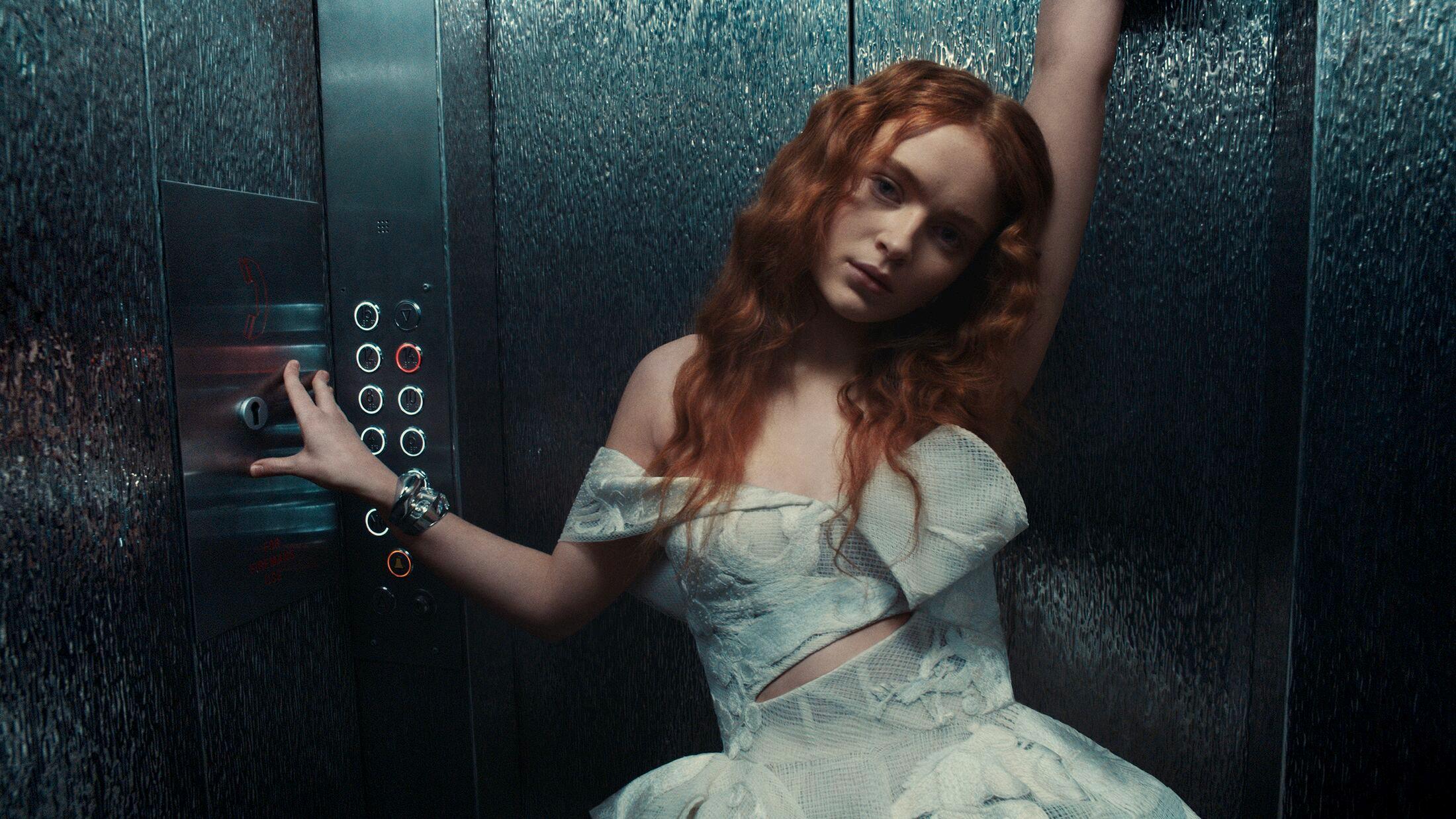
BRAND SELECTION
The brand selection was based on a combination of primary and secondary research. It was important to the case study that the brand be one that was not as familiar among consumers and that does not currently have a strong online presence, nor is well-known for its fashion film. From the primary research, 63 survey participants indicated they were familiar with luxury brands and none of them provided Alexander McQueen as an example of a brand they were familiar with. However, the competitive analysis completed in the secondary research phase indicates that Alexander McQueen is positioned as one of the most exclusive luxury brands. Additionally, secondary research provided insights to the online presence of Alexander McQueen, which is not strong, especially on YouTube, despite the brand having an established history in the fashion film industry.
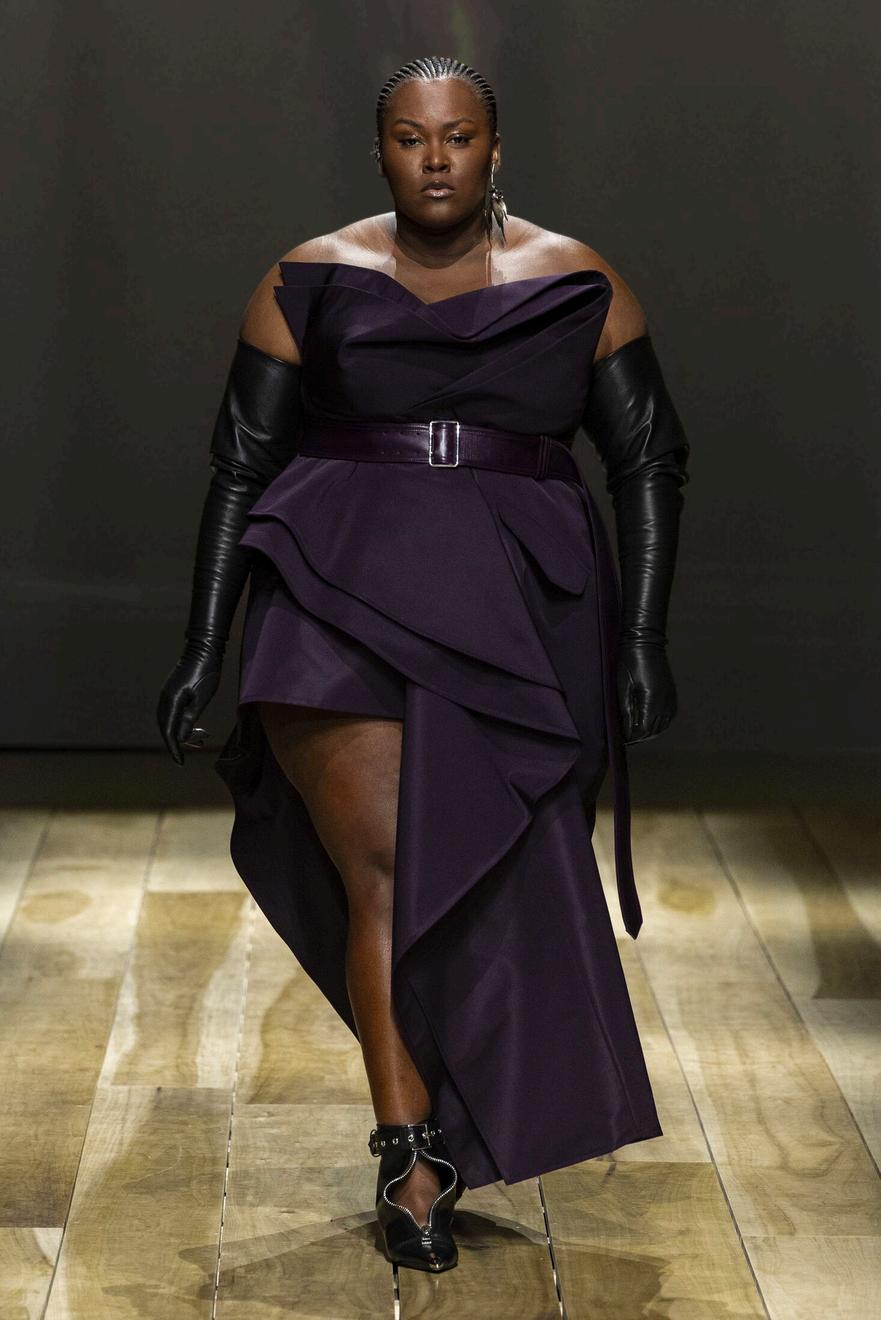


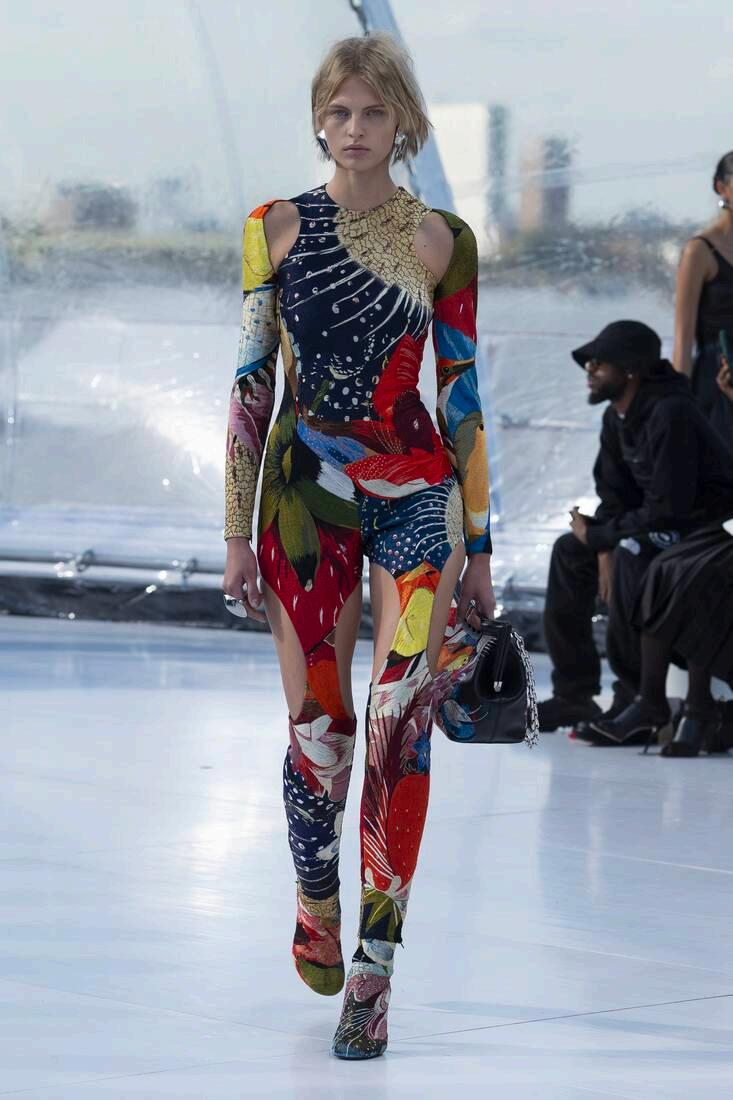
BRAND OVERVIEW
Alexander McQueen has been a controversial brand since its inception due to its experimental and provocative designs. The House was founded in 1992 by Lee Alexander McQueen and was acquired by Kering Group in 2001 (Brand History). The brand received much bad press over its controversial shows in its early years which helped launch it to success. It is now known to be one of the most innovative brands in the fashion industry with critically acclaimed collections (Brand History).
BRAND HISTORY
Lee Alexander McQueen started the label Alexander McQueen in 1992 after receiving his degree from the fashion college at Central Saint Martins (Agnew). The success of the brand was evident by 1996 when McQueen was designing for famous rockstar, David Bowie (Agnew). McQueen leveraged the connections he made within the haute-couture industry while working as the chief-director of Givenchy, which gained him notoriety for his own brand (Agnew). One of the brand’s initial biggest successes was the signature style of low-rise jeans (Agnew). This notably influenced the low-rise jean trend seen across the fashion industry in the late 1990s and early 2000s (Agnew).
The brand was expanded in 2000 when Gucci (now Kering Group) bought a 51% stake in Alexander McQueen (Agnew). This allowed the brand to open stores in New York, Las Vegas, Los Angeles, London, and Milan, which transformed it into an international brand (Agnew). McQueen launched its first menswear collection in 2005 and first online store in 2008 (Agnew).
Following the death of Lee Alexander McQueen in February 2010, Kering Group appointed Sarah Burton as the creative director for the House in May of the same year (Agnew). The McQueen brand was £32 million in debt at the time of the designer’s death, but the royal wedding of 2011 created a Duchess effect for the brand (Agnew). Kate Middleton wore the custom-designed Alexander McQueen wedding dress for her nuptials to Prince William, and the brand saw an influx in sales as a result (Agnew).
MISSION STATEMENT
"The House of Alexander McQueen is distinctive for its innovative and uncompromising expression of unbridled creativity. Integral to the Alexander McQueen culture is the juxtaposition between the feminine and the masculine, fragility and strength, romance and rebellion, man and machine."
BRAND IDENTITY PRISM
PICTURE OF SENDER
Physique
Eccentric, gothic, skull, controversial, tantalizing, androgynous, uncompromising
Relationship
Exclusivity, uniqueness, confidence, quality
Personality
Grunge, punk, provocative, modern, aggressive, romantic, deviant, grotesque
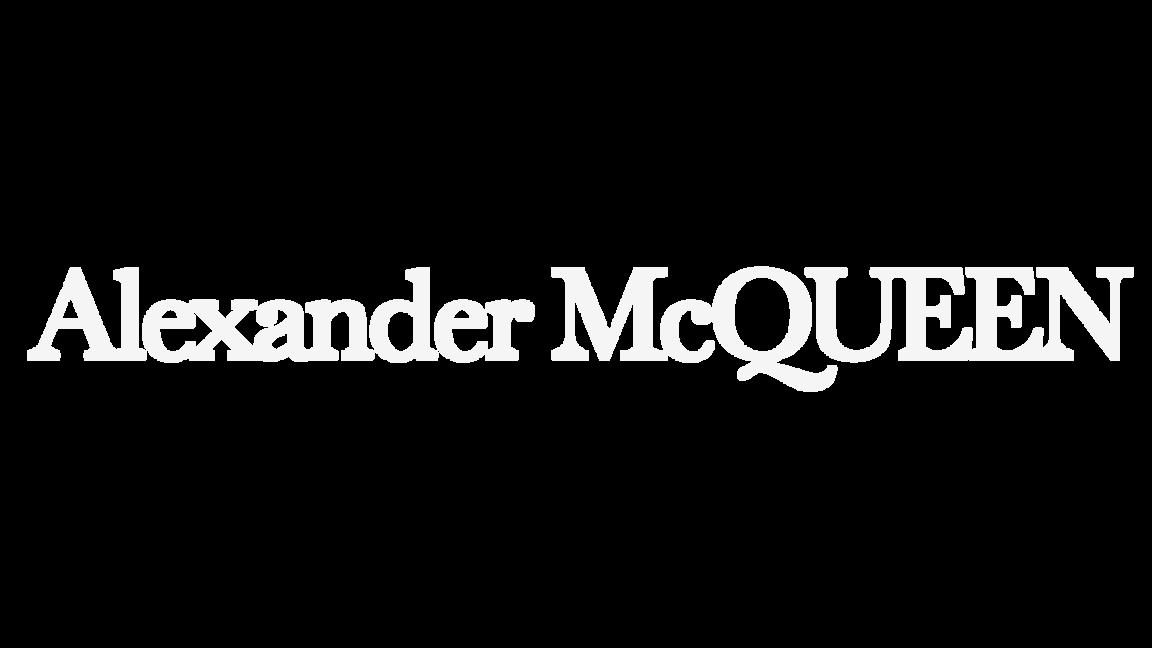
Reflection
Culture
Luxury, artistic, experimentalist, fashion enthusiast
PICTURE OF RECEIVER
English rural traditions, British couture, sense of community, timeless craftsmanship
Self-Image
Creative, rebellious, expressive, non-conformist
BUSINESS MODEL CANVAS
Key Partners Key Activities
CreativeDirector
FilmDirector
Fashionphotographer
Producer(s)
Developer(s)
Creativeagency
Evaluatingcurrent fashionfilmlandscape
Evaluatingonline presence
Key Resources
Fashionfilmassets
Interactivevideo software
Value Proposition
Consumerengagement: personalized,userguidedexperience
Brandawareness: increaseonlinepresence
Insights:dataanalytics canprovidebetter understandingof consumerbehaviorsand preferences
Engagingconsumer experience
Buildbrandawareness andloyalty
Customer Relationship Channel Customer Segments
AlexanderMcQueen website
Socialmediachannels
Currentluxury consumersloyaltobrand suchasFashionistasand Classics
GenerationZasthenext generationofconsumers

Cost Structure
Pre-productionplanning
Revenue Stream
Production Salesrevenuefromluxurygoods
UNIQUE SELLING PROPOSITION
The unique selling proposition of Alexander McQueen is the message it conveys to the consumer. Rooted in British couture, its craftsmanship is high quality, and the designs emulate a raw, rebellious artistry which attracts consumers. Some view Alexander McQueen as controversial but the brand loyalist appreciates the experimental nature of its products.
By introducing interactive video to its fashion film, Alexander McQueen continues to reflect its experimental image, while providing opportunities for the brand to increase its online presence and engage with consumers through personalized experiences that connect them with the brand on a deeper, emotional level. This also gives the brand a competitive advantage because no other luxury brands are using interactive video.
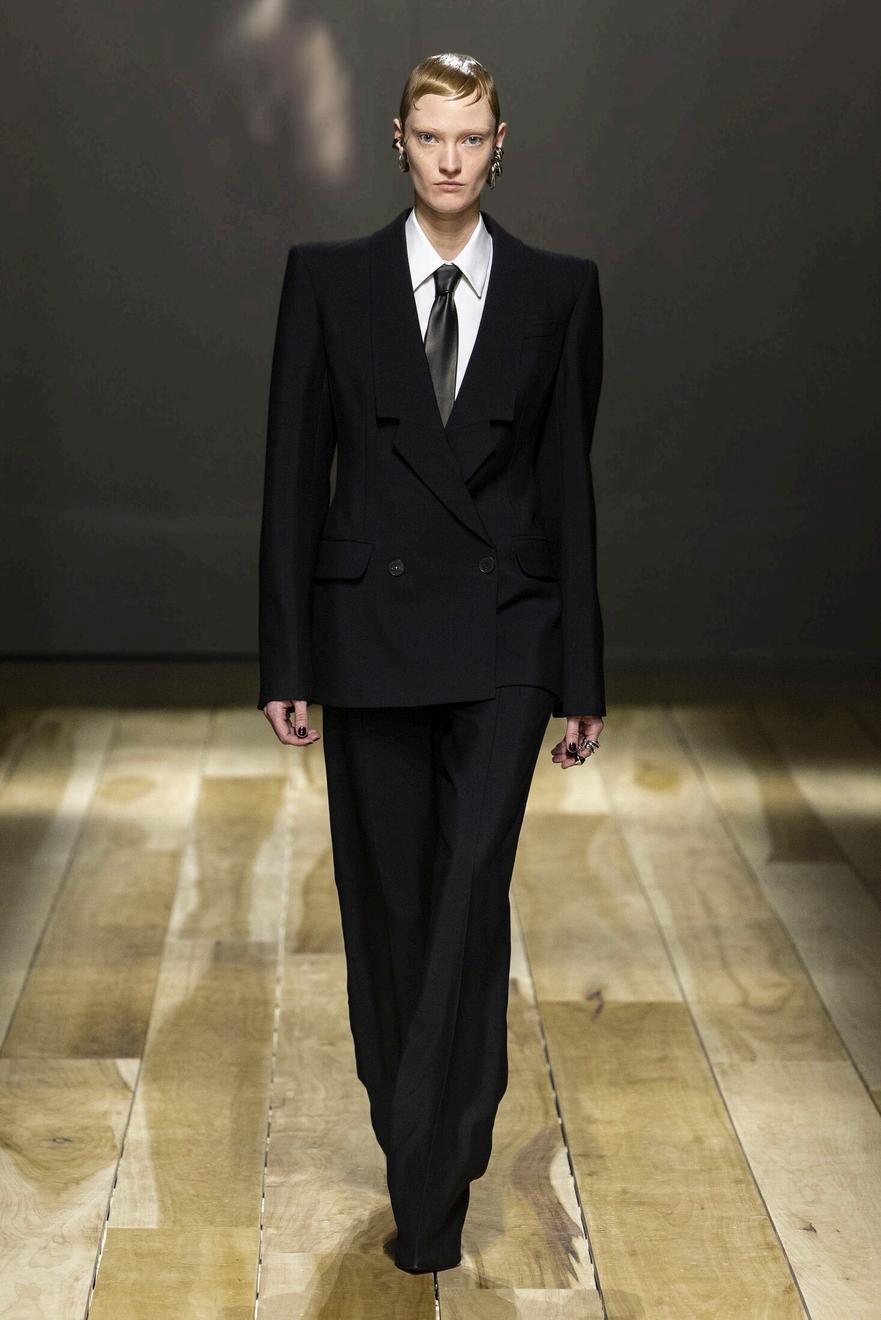
ALEXANDER MCQUEEN IN FASHION FILM
"Highland Rape", Fall/Winter 1995

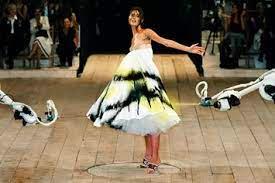

"Joan", Fall/Winter 1998 "No. 13", Spring/Summer 1999


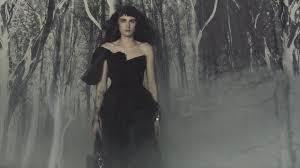
Storm Chasing by Sophie Muller, Spring/Summer 2022 Mycelium by
Autumn/Winter 2022
Present day fashion films
Shows directed by Lee Alexander McQueen
Sophie Muller,
The Slash Bag by Glen Luchford, 2022
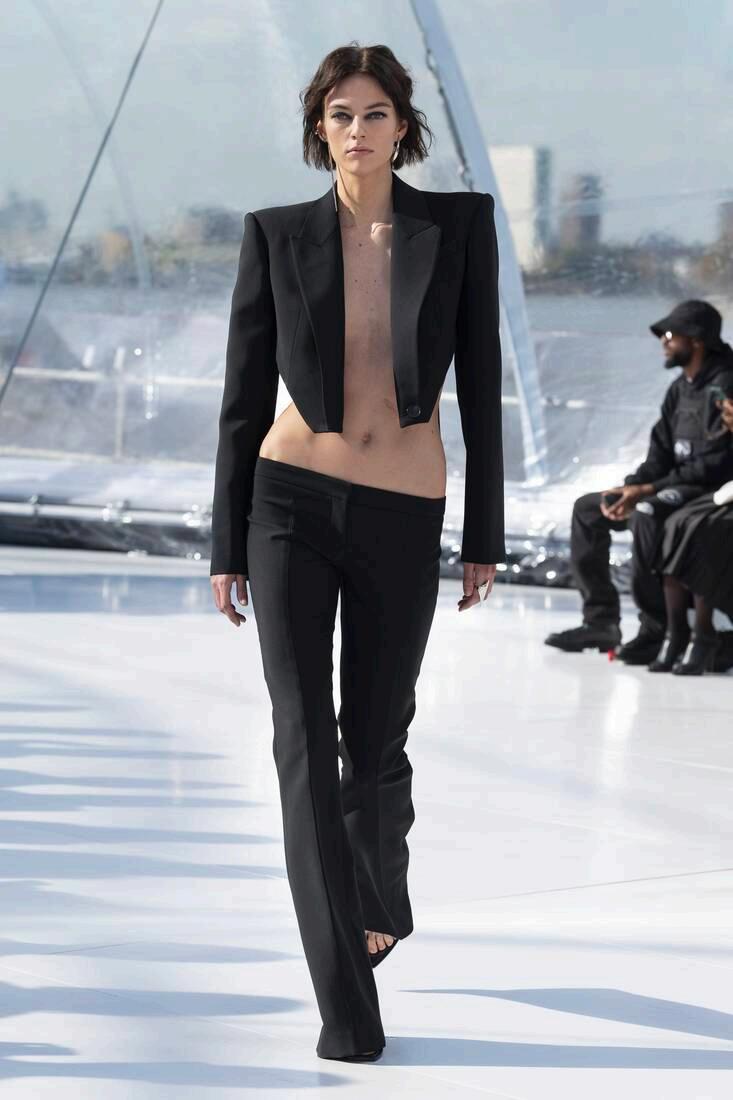
BRAND SUMMARY AND PROPOSITION
Primary and secondary research show that Alexander McQueen lacks brand awareness among younger consumer groups, such as Generation Z. Upon analyzing the brand, its rebellious, spirited image combined with its androgynous design qualities are characteristics that will appeal to this consumer group. However, the brand currently has a weak online presence, and Gen Z consumes digital content constantly. Alexander McQueen has a robust heritage and has long used fashion film experimentally to complement its controversial collections, which are innovative and have a history for introducing trends. Each of the aforementioned factors were considered when selecting Alexander McQueen for this case study. Interactive fashion film will provide Alexander McQueen with the opportunity to engage the next generation of consumers through a personalized, user-guided experience that will increase its online presence, driving brand awareness. The interactive video will be a single budget-line item added to a fashion film production budget. The return on investment should be significant for the brand, not only due to the low cost, but also because of the insights it will gain from the data analytics gathered from the interactive video. Alexander McQueen will have a better understanding of consumer behaviors and preferences, giving them a competitive advantage for predicting demands and forecasting trends.
TARGET AUDIENCE
It is a fundamental part of marketing to determine a target audience when conceptualizing new ideas for campaigns, products, or initiatives. Defining a target audience requires research to identify populations, much like the customer segments outlined in section 2.1. It is equally important to understand the unique needs of each consumer group to effectively target a single audience while potentially finding areas of overlap that will also appeal to a broader market. This section aims to define the target audience for the introduction of interactive video for fashion film by providing the consumer profile, persona, and journey.
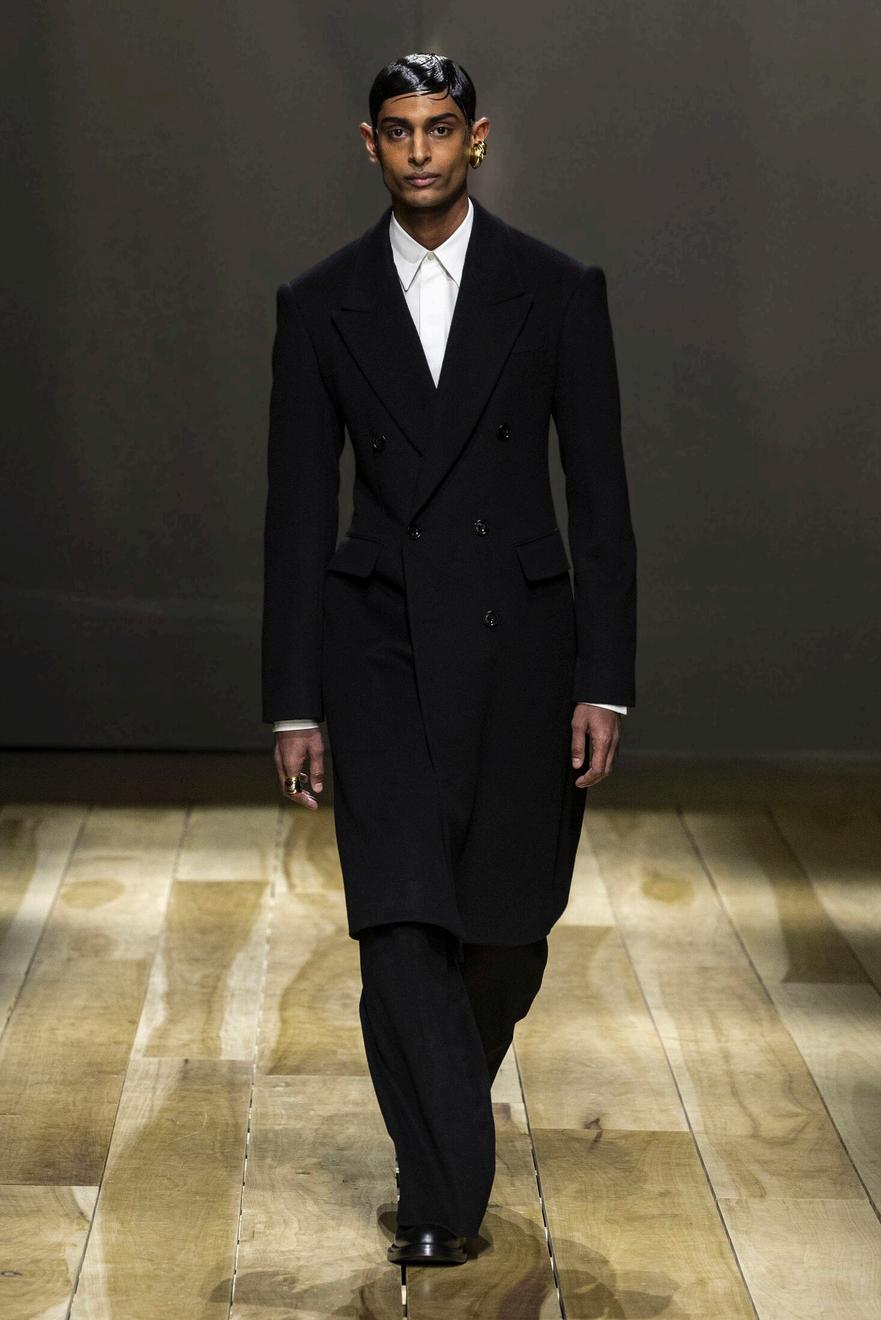
CONSUMER PROFILE
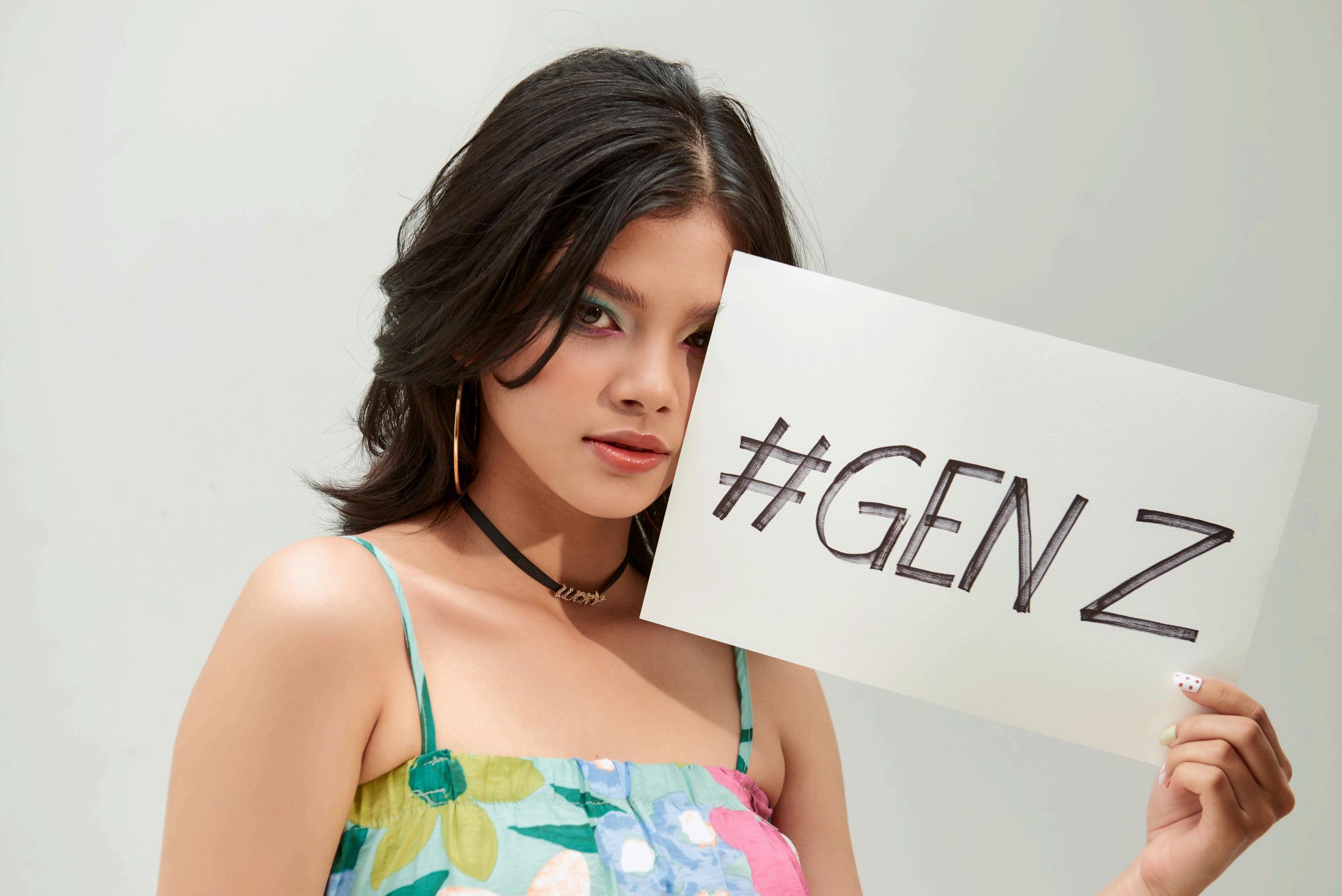
The target audience for this initiative is the next generation of consumers, or Generation Z. Based on secondary research, this group of consumers currently makes up 40% of the market and is expected to surpass Millennials as the largest group by 2026 (“Businesses and Gen Z Consumers | NCR Primer”). Gen Z consumers are digital natives who are ready to interact and always looking for new ways to engage with brands through personalized experiences (“Businesses and Gen Z Consumers | NCR Primer”). These consumers care deeply about sustainability and are socially and politically educated (“Businesses and Gen Z Consumers | NCR Primer”). Generation Z has lived through multiple experiences such as the Great Recession and Covid-19 Pandemic, which encourages them to prioritize education and finances more than previous generations, leading them to delay other milestones such as marriage and having children. The idea for this project is to build brand awareness through gamified, user-guided experiences among these young consumers now, so that in the future when they can make luxury purchases, they demonstrate brand loyalty.
PERSONA: MEET HANNAH
BIO
One year removed from her undergraduate studies at NYU, Hannah is working as a Junior Product Manager at L'Oreal in New York. In her freetime, Hannah enjoys travel with friends, brunch dates, and of course, developing content for her TikTok page.


Hannah is a new generation luxury consumer. She opts for entry-to luxury brands that fit within her budget, but aspires to grow into the luxury brands she follows on social media which include Celine, Balenciaga, and Off-White. She wants to have personalized experiences that allow her to feel connected with the brand. Hannah prefers to make decisions based on impact which makes her feel empowered to affect change.
GOALS
To develop authentic, values-driven affinity for luxury brands
Entry into luxury through inclusive brand experiences
To connect with the brand’s collections through interactive engagements
FRUSTRATIONS
Limited points of memorable brand discovery
Limited personalized experiences to engage with brands
SOCIAL MEDIA ACTIVITY
Hannah, 22
Location:NewYork
MOTIVATIONS Authenticity Inclusivity

CONSUMER JOURNEY MAP
APPLICATION OF FRAMEWORK

The final deliverable of the case study was an interactive fashion film for Alexander McQueen which was produced by applying the framework developed in this thesis. The objective is consumerdriven which was established by the fashion film category. This raw, somewhat dark, emotional piece can be categorized as emotionality. The point of interactivity is outfit selection since this was the most popular among consumers surveyed. This interactive fashion film can be accssed by scanning the QR code below.

SCAN TO INTERACT
FOCUS GROUPS
In lieu of collecting insights from data analytics for this case study, two small focus groups were conducted with the 12 survey participants who opted in for participation in followup research regarding the interactive fashion film. These participants were predominantly Generation Z consumers, but there were two Millennial and two Generation X participants. The purpose of the focus groups was to gauge the consumers’ reaction to the interactive fashion film experience and have an open discussion about their preferences, as well as gather feedback.
Focus group participants were first asked what their immediate impression was from the interactive fashion film. The objective of this question was to determine the consumer reaction to this experience. Summarizing the responses, most participants cited they were not familiar with Alexander McQueen as a luxury brand but that the experience made them more interested in the brand. Their reasoning was the ability to select the outfit they wanted to see in fashion film and the shorter “cuts” of video between moments of engagement. Participants also appreciated the artistic and emotional qualities of the film overall.
The next question asked of the focus groups was would they like to see more interactive fashion films in the future. All twelve participants agreed they not only would like to see more, but stated they would engage in these kinds of experiences. A few even referenced their lack of knowledge of the Alexander McQueen brand and how this experience “piqued their curiosity” of the brand.
Finally, the participants were asked for feedback on the interactive fashion film. While most feedback was positive, there were a few participants who felt the buttons for outfit selection could be bigger or of better quality. It is important to note that this feedback was taken into consideration when finalizing the interactive fashion film, and updates were made as a result.
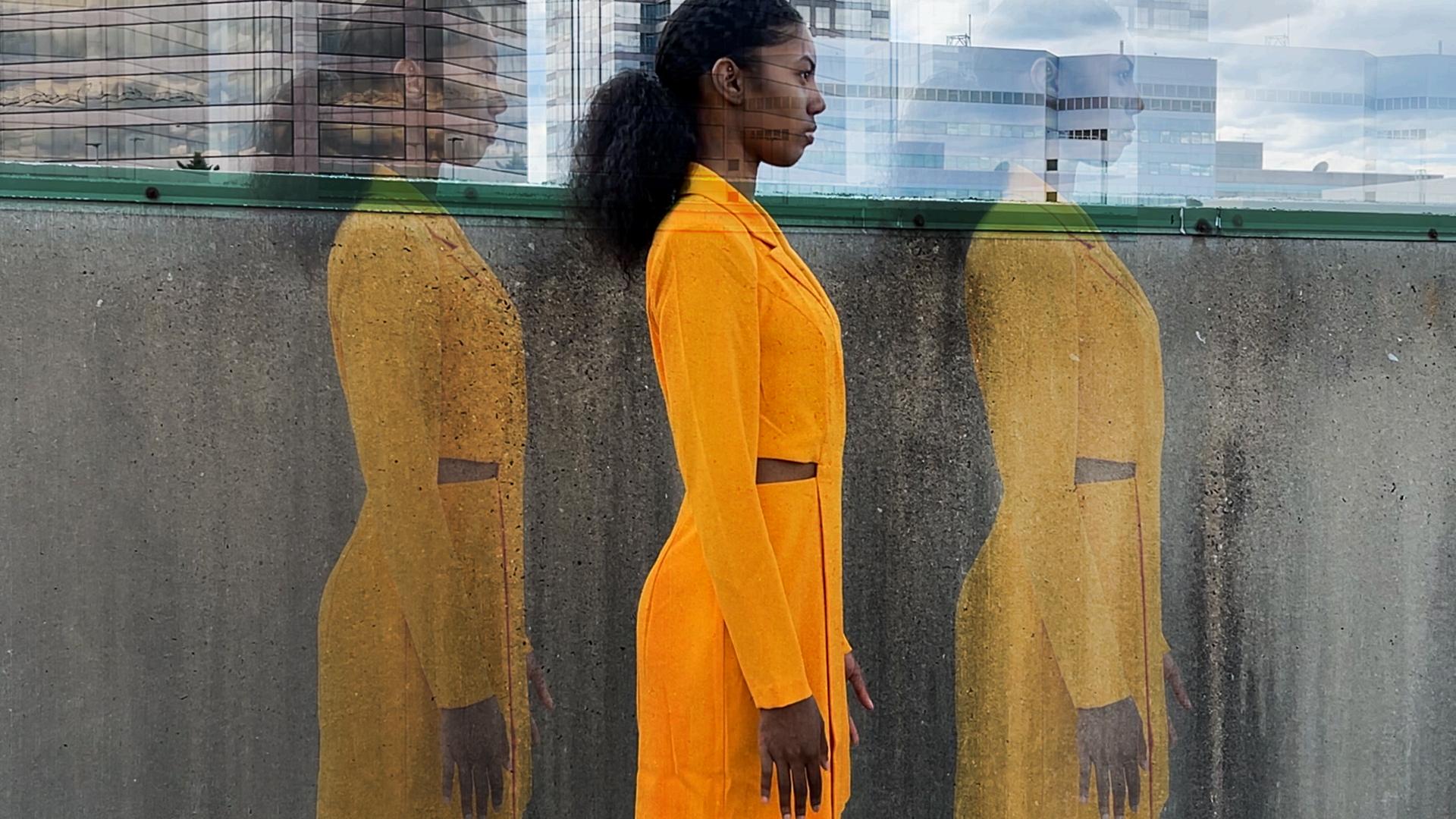
CONCLUSION
Interactive video can be seamlessly implemented into the fashion film production process for luxury brands using the framework developed in this thesis. Interactive video can be used as supplementary content, much like social media campaigns, to the fashion film initiative. Brands do not have to plan a separate film production to create interactive videos. This also means that budgeting for the interactive video can be added to the fashion film production budget and will be an expense of less than 3% of the total budget.
Interactive video for fashion film falls at the intersection of art and technology. Through use of new technology, brands can continue to create traditional fashion films that have long been viewed as means for artistic expression while supplementing these experiences with interactive video. There are many benefits to leveraging interactive video, both for the brands and the consumers. Consumers want personalized brand experiences, which interactive fashion film can provide by creating points of interactivity for them to engage with. This will increase the brand awareness by engaging consumers in a new and innovative way, while simultaneously increasing the brand’s online presence. The brand will also be able to better predict demands and forecast trends, both of which can assist in future product developments with the insights provided by interactive video.

WORKS CITED
“The 6 Key Ingredients of a Perfect Interactive Video.” Verb, 26 Mar. 2019, https://b og.verb.tech/the-6-key-ingredients-of-a-perfect-interactive-video.
“10 Best Interactive Videos on YouTube (with Examples) [2021] ” https://filmora.wondershare.com/video-marketing/interactive-video.html. Accessed 22 Apr. 2023.
Achille, Antonio, and Dan el Zipser. “A Perspective for the Luxury-Goods Industry during—and after—Coronavirus.” McKinsey & Company, 1 Apr. 2020, http://ceros mckinsey.com/ coronavirus-promo.
Adamska, Magda. “The Positioning of the Four Most Valuable Luxury Fashion Brands ” BrandStruck, 14 Jan. 2019, https://brandstruck co/blog-post/positioning-three-valuable-luxury-fashion-brands/.
Agnew, Molly Elizabeth. “Alexander McQueen: An Overview.” Eternal Goddess, 31 July 2022, https://www.eternalgoddess.co uk/posts/alexander-mcqueen-an-overview.
“Alexander McQueen Unveils Its Storm Chasing SS22 Collection Video ” Wonderland, 17 Feb 2022, https://www wonderlandmagazine com/2022/02/17/alexander-mcqueen-storm-chasing/
“Alexander McQueen Unveils ‘The Slash Bag’ Starring Kaia Gerber.” Wonderland, 24 Nov. 2022, https://www.wonderlandmagazine.com/2022/11/24/feature-alexander-mcqueen-slash-bag/.
A ldredge Kari, et al. “US Consumer Spending: 2022 Survey Results | McKinsey.” McKinsey & Company, 4 May 2022, https://www.mckinsey com/capabilities/growth-marketing-and-sales/our-insights/how-usconsumers-are-feeling-shopping-and-spending-and-what-it-means-for-companies
Barco, Mandalit del. “W th ‘No Particular Roadmap,’ Gus Van Sant and Gucci Make a Fashion Film.” NPR, 19 Nov. 2020, https://www.npr.org/2020/11/19/936506736/with-no-particular-roadmap-gus-van-sant-andgucci-direct-a-fashion-film
Booker Avery. “When Will Luxury Brands Take Resale In-House?” Jing Da ly, 5 Mar. 2021, http://jingdaily.com/when-will- uxury-brands-take-resale-in-house/.
Bowen Peter “10 Films Behind Alexander McQueen’s Fashion ” https //bleeckerstreetmedia com/editorial/films-behind-alexander-mcqueens-fashion Accessed 16 Apr 2023
“Brand History: Alexander McQueen ” https://www ker ng com/en/houses/couture-and-leather-goods/alexander-mcqueen/history/ Accessed 22 Apr 2023
Bretous, Martina “Why You Should Leverage Interactive V deos [Data from 500+ Marketers].” 3 May 2022, https://blog.hubspot.com/marketing/is- nteractive-video-the-next-big-th ng.
“Businesses and Gen Z Consumers | NCR Primer.” NCR https://www.ncr.com/blogs/generation-z-characteristics-what-businesses-should-know-about-the-next-wave-of-consumers. Accessed 30 Mar 2023
“Buying into Better The Future of the Consumer Industry.” Deloitte United States, 2023, https://www2.deloitte.com/us/en/pages/consumer-business/articles/future-of-consumer-industry.html.
Caloia, Dante. “Social Media Is Shortening Our Attention Spans.” The Journal 2 Sept. 2022, https://www.queensjournal ca/story/2022-09-01/opinions/social-media-is-shortening-our-attention-spans/.
“Chanel Marketing Mix.” Blog.Notesmatic, 30 Nov. 2021, https://blog notesmatic.com/chanel-marketing-mix/.
Crawford, Chris Chris Crawford on Interactive Storytelling, second edition New Riders, 2013
Davidson, Emma Elizabeth “Around the World in 15 Poignant Films, with Hermès ” Dazed, 13 Jan 2022, https://www dazedd gital com/fashion/article/55195/1/around-the-world-in-15-films-with-hermes-parisfrederic-laffont-bordeaux.
Dark, Alexa. “Alexander McQueen’s Most Shocking Runway Moments - Designer Dresses Shoes.” L’Officiel USA, 17 Mar. 2021, https://www.lofficielusa.com/fash on/alexander-mcqueen-most-shocking-runwaymoments.
DeAsi, Gary. “10 Powerful Behavioral Segmentation Methods to Understand Your Customers ” Pointillist, 8 Feb. 2018 https://www.pointill st.com/blog/behavioral-segmentation/.
Dijkstra, Lars. “Affluent Luxury Segmentation ” Ipsos, 6 May 2022, https://www.ipsos.com/en-nl/affluent-luxury-segmentation
Eldr dge, Alison. “Generation Z | Def nition, Characteristics Trends, & Birth Years | Britann ca ” Britannica, 3 Apr. 2023 https://www.britannica.com/topic/Generation-Z.
Eppe Beauloye, Florine “The Future of Luxury: 7 Trends to Stay Ahead in 2023 ” Luxe, 10 Jan 2023 https://luxe digital/business/digital-luxury-trends/luxury-future-trends/
Epstein, Michael “How to Budget Your Film [FREE Template].” StudioBinder, 5 Sept. 2019, https://www.studiobinder com/blog/film-budget-planning-how-to-effectively-budget-a-script-breakdown/.
“Fashion Film.” Alexander McQueen, https://www.alexandermcqueen.com/en-us/fashion-film. Accessed 16 Apr 2023
Ferguson. “26 Best Interactive Videos of Al Time.” Wyzowl, 25 Jan. 2023, https://www.wyzowl.com/best-interactive-videos/.
Gilliland, Nikki. “10 Examp es of Great Fashion Marketing Campaigns.” Econsultancy, 7 Nov. 2018, https://econsultancy.com/fashion-market ng-campaigns/.
Heckmann, Chris “Film Budget and Production Expenses Explained ” StudioBinder, 13 Feb 2022, https://www studiob nder com/blog/production-budget/
Hendrik “Top 15 Interactive Video Software & Platforms in 2023 ” Spott ai, 13 Dec 2022, https //spott ai/insights/top-15-interactive-v deo-software-platforms-in-2023/
Howe, Nora. “Hermès Exercises Style in New Athletic Film.” Luxury Daily, 17 Feb. 2021 https://www.luxurydaily.com/hermes-exerc ses-style-in-new-athlet c-film/.
“Interactive Video: Stats, Tips, and Tricks ” VIXY Video Platform, 21 May 2021 https://www.vixyvideo.com/the-state-of-interactive-video-in-2021-stats-tips-and-trends/.
“Jefferson Hack Is Part of the BoF 500.” The Bus ness of Fashion, https://www.businessoffashion com/community/people/jefferson-hack Accessed 9 Apr. 2023.
Karnes, KC. “10 Behav ora Segmentation Examples and Strategies.” CleverTap - App Analytics and Mobile User Engagement, 28 May 2019, https://clevertap.com/blog/behavioral-segmentation/
Knight, Nick. “Fashion Film: Hermès.” SHOWstudio, 20 Apr. 2006, https://showstud o.com/projects/the sound of clothes/fashion-film-herm%C3%A8s.
--- “Fashion Film: Prada ” SHOWstud o, 20 Apr 2006 https://showstudio com/pro ects/the sound of clothes/fashion-film-prada
Kolk Alar “What Is Prada’s Marketing Strategy?” EpiProdux Blog, 19 Mar 2023 https://epiprodux com/blog/what-is-pradas-marketing-strategy/
Lamb, Rachel. “Brand Loyalty Highest in Gen X Consumers: EMarketer.” Retail Dive https://www.retaildive.com/ex/mobilecommercedaily/brand-loyalty-highest-in-gen-x-consumers-emarketer. Accessed 8 Apr 2023.
Law, Thomas J “10 Vital Strateg es to Use When Market ng to Generation Z n 2020.” 3 Nov. 2020, https://www.oberlo.com/blog/marketing-strategies-generation-z.
“Luxury Apparel - Worldwide.” Statista https://www.statista.com/outlook/cmo/luxury-goods/luxury-fashion/luxury-apparel/worldwide. Accessed 15 Apr. 2023.
“Luxury Fash on - Worldwide.” Statista https://www.statista.com/outlook/cmo/luxury-goods/luxury-fash on/worldw de Accessed 2 Apr. 2023.
Majidi Michele “Gucci Brand Value 2022 ” Statista, https://www statista com/statistics/980690/brand-value-of-gucci/ Accessed 8 Apr 2023
Marcus, Chris “How to Grab Gen Z’s Attention in 8-Seconds or Less ” Colormatics, July 2022, https://www colormatics com/article/gen-z-attention-span/
Martin Greenbaum, Abbie. “The Best Films Made by Luxury Fashion Brands.” Dandelion Chandelier, 20 May 2019, https://www.dandelionchandelier.com/2019/05/20/films-by-fashion-brands/.
McClelland, Megan “The Best Fashion Campaigns Of 2022 ” Grazia Middle East, https://graz amagazine com/me/articles/major-fashion-campaigns-2022/ Accessed 16 Apr 2023
McKenna, Amy “Generation X | Origin, Years Characteristics, & Facts.” Britannica, 8 Apr. 2023, https://www.britannica.com/topic/Generation-X.
Mitchell, Travis. “On the Cusp of Adulthood and Facing an Uncertain Future: What We Know About Gen Z So Far.” Pew Research Center’s Social & Demographic Trends Project, 14 May 2020, https://www.pewresearch.org/social-trends/2020/05/14/on-the-cusp-of-adulthood-and-fac ng-an-uncertain-future-what-we-know-about-gen-z-so-far-2/.
Molenaar, Koba. “20 Millennial Spend ng Habits Statistics That Wi l Blow Your Mind.” Influencer Marketing Hub, 3 May 2022 https://influencermarketinghub com/millenn a -spending-habits/.
“Move Over Gen Z, It s Time for Gen Alpha.” The Social Element 8 Nov. 2018, https://thesocialelement.agency/time-for-gen-alpha.
Nast, Condé. “BTS and Louis Vuitton’s New Fashion Film Is a Game Changer.” Vogue, 7 July 2021, https://www.vogue.com/article/bts-louis-vuitton-fall-winter-2021-film.
Newman, Lucus “7 Ways the Metaverse Cou d Change the Entertainment Industry ” MUO, 19 Dec 2022 https://www makeuseof com/how-metaverse-change-entertainment-industry/
Onkes, Yanis “Interactive Videos – Cons and Pros ” LinkedIn, 22 Oct 2020, https://www linkedin com/pulse/interactive-videos-cons-pros-yanis-onkes/
Parker, Sam. “What Is Interactive Video and Is It Worth Using?” Wyzowl, https://www.wyzowl com/what-is-interactive-video/. Accessed 30 Mar. 2023.
Parr, Christopher. “L.A.Dy Dior The Film - Starring Marion Cotillard.” Pursuitist, 20 May 2012, https://pursuitist.com/l-a-dy-dior-the-f lm-starring-marion-cotillard/.
R, Shradha “A Subtle Twist to Video Marketing: Fashion Films.” Vue.Ai Blog, 7 Nov. 2018 https://vue.ai/blog/ai- n-retail/subtle-twist-to-v deo-market ng-fashion-film/.
Rees-Roberts Nick. Fashion Film: Art and Advertising in the Digital Age, 1st ed. Bloomsbury Visual Arts, 2018.
Roberta, Vona. “Building a Legacy: Chanel’s Luxury Marketing Strategy.” The Strategy Story, 3 Apr. 2021, https://thestrategystory.com/2021/04/03/chanel-marketing-strategy/.
Sabanoglu, Tugba “Chanel: Brand Value Worldw de 2017-2022 ” Statista, https://www statista com/statistics/1010860/chanel-brand-value-worldwide/ Accessed 8 Apr 2023
--- “Global Revenue of the Kering Group, by Brand 2022.” Statista, 24 Feb. 2023, https://www.statista.com/stat stics/267476/global-revenue-of-the-kering-group-by-brand/.
--- “Hermès: Brand Value Worldwide 2010-2021 ” Stat sta, https://www.statista.com/statistics/ 985435/hermes-brand-value-worldwide/. Accessed 8 Apr 2023.
--- “Louis Vuitton: Brand Value Worldwide 2016-2022 ” Statista, https://www statista com/ statistics/980552/louis-vuitton-brand-value-worldwide/ Accessed 8 Apr 2023
--- “Most Popular Luxury Brands on Social Media 2022 ” Statista, https //www statista com/ statistics/1256796/luxury-brands-with-most-followers-on-social-media/ Accessed 8 Apr 2023
--- “Topic Prada.” Statista, 21 June 2022, https://www.statista.com/top cs/3533/prada/.
Schiffer, Jessice. “Fash on Brands Still Succumbing to the High-Priced Artsy Film.” Digiday, 3 Oct. 2017, https://d giday com/marketing/fashion-brands-still-succumbing-high-priced-artsy-film/
Smith, P. “Prada: Brand Value Worldwide 2012-2022.” Statista, 3 Nov. 2022 https://www.statista.com/statistics/985273/prada-brand-va ue-worldwide/.
Sowerbutts, Cressi. “The Best Fashion Films.” Luxiders Magazine, 8 Oct. 2020, https //luxiders.com/best-fashion-films/.
“Spott Pricing ” Spott, https://spott.ai/spott-pricing/. Accessed 6 Apr 2023.
Swain Matt “3 Things Brands Need to Know about Gen Z’s CX Expectations ” The Drum, 16 Mar 2022, https://www thedrum com/opinion/2022/03/16/3-things-brands-need-know-about-gen-z-s-cxexpectations
The Prada Group and Cinema | Prada Group. https://www.pradagroup.com/en/perspect ves/ stories/sezione-progetti-speciali/prada-group-cinema.html Accessed 16 Apr 2023.
Tsuruta, Aya. “The Average Millennial s Attention Span Shorter Than Your Goldfish’s.” https://www repsly.com/blog/consumer-goods/the-average-millennials-attention-span-shorter-than-your-goldfishs. Accessed 9 Apr. 2023.
Waterhouse, Jonah “8 of the Best-Ever Chanel Moments on Film.” ELLE, https://www.elle com.au/fashion/chanel-moments-film-23324. Accessed 16 Apr. 2023.
“What Are the Core Character stics of Generat on Z?” The Annie E. Casey Foundation, 14 Feb. 2023, https://www.aecf.org/blog/what-are-the-core-characteristics-of-generation-z. Wightman-Stone, Danielle. “Alexander McQueen Inspired by Mycelium for AW22.” FashionUnited 16 Mar. 2022, https://fashionunited.uk/news/fashion/alexander-mcqueen-insp red-by-mycel um-foraw22/2022031662070
Winter, Dayna “Gen Alpha: Everything Brands Need to Know in 2023 ” Shopify 24 Mar 2023, https://www shopify com/blog/gen-alpha
Yokoi, Tomoko. “Female Gamers Are on The Rise. Can the Gaming Industry Catch Up?” Forbes, 4 Mar. 2021, https://www.forbes.com/sites/tomokoyokoi/2021/03/04/female-gamers-are-on-the-rise-can-thegaming-industry-catch-up/.
Zelazko, A icja. “M llennial | Demographic Group ” Britannica, 28 Mar. 2023, https://www.britannica.com/topic/millennial.
